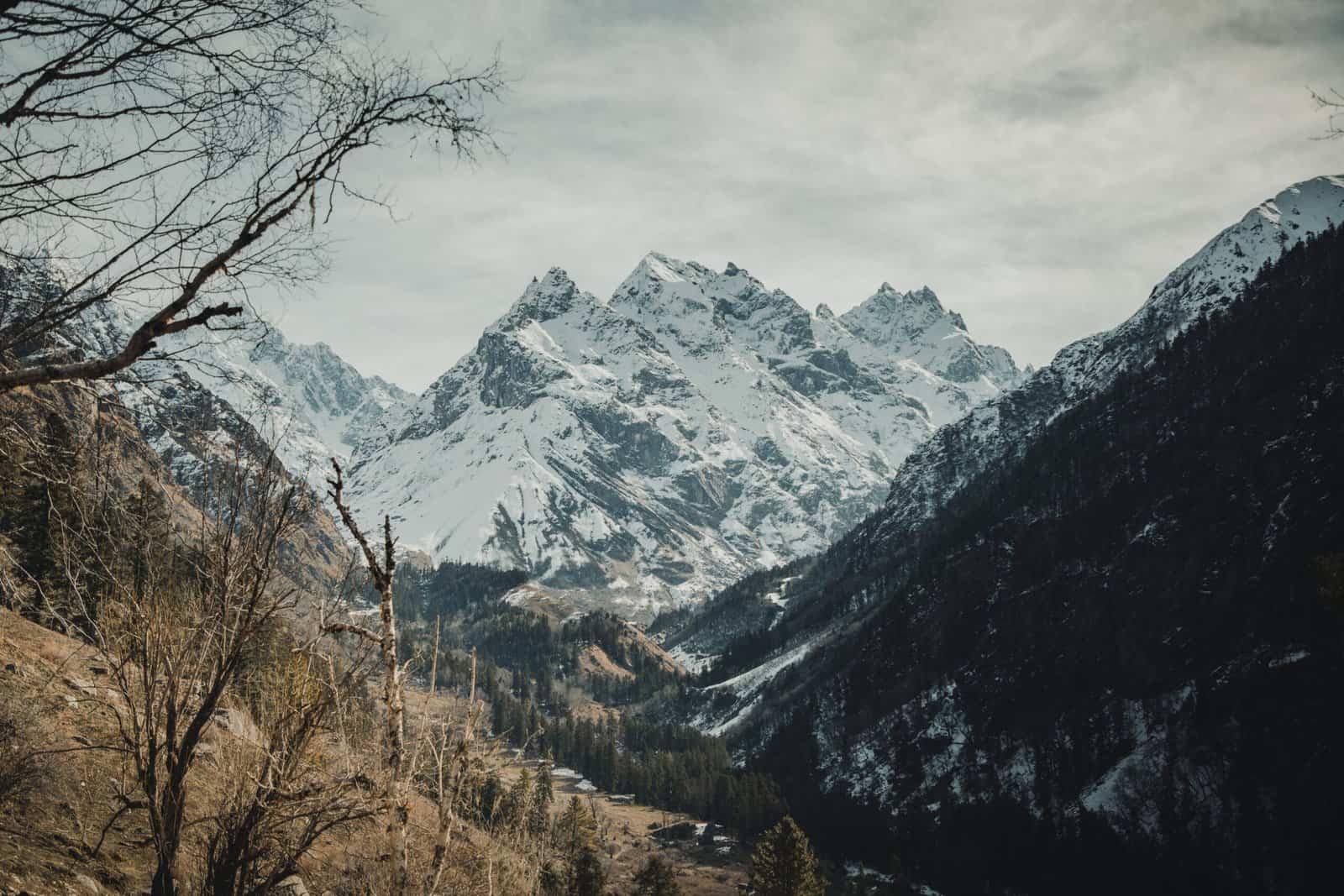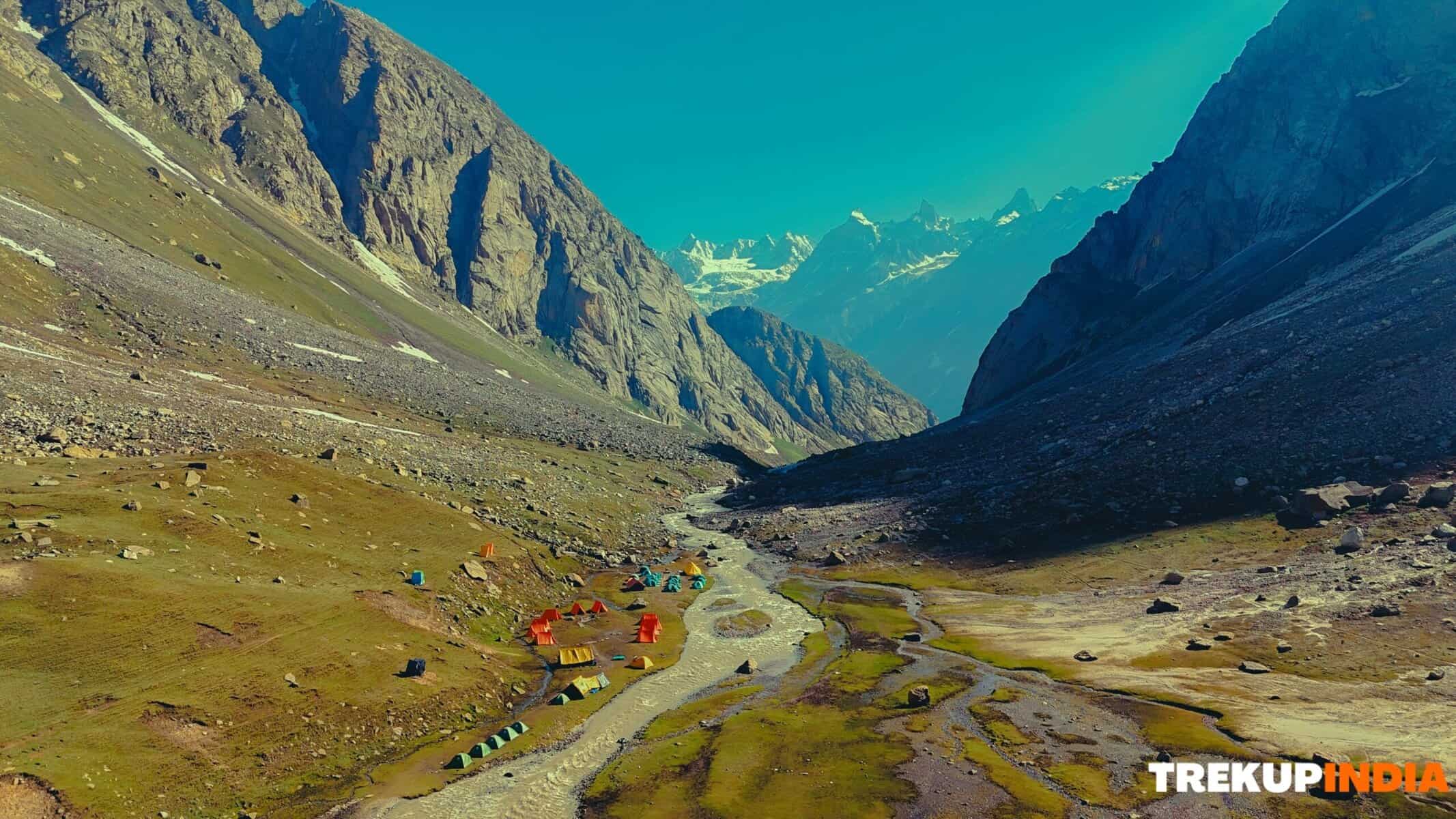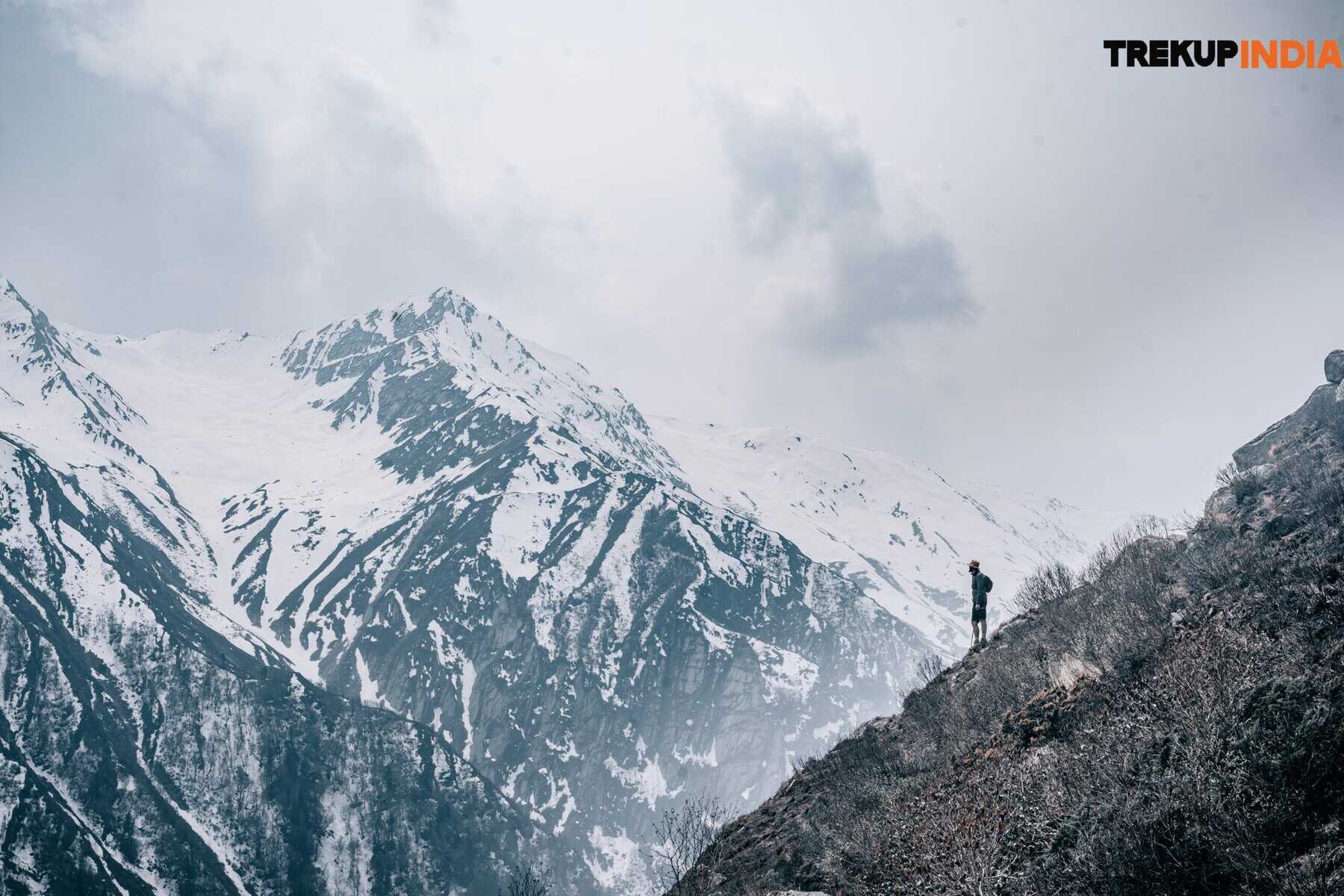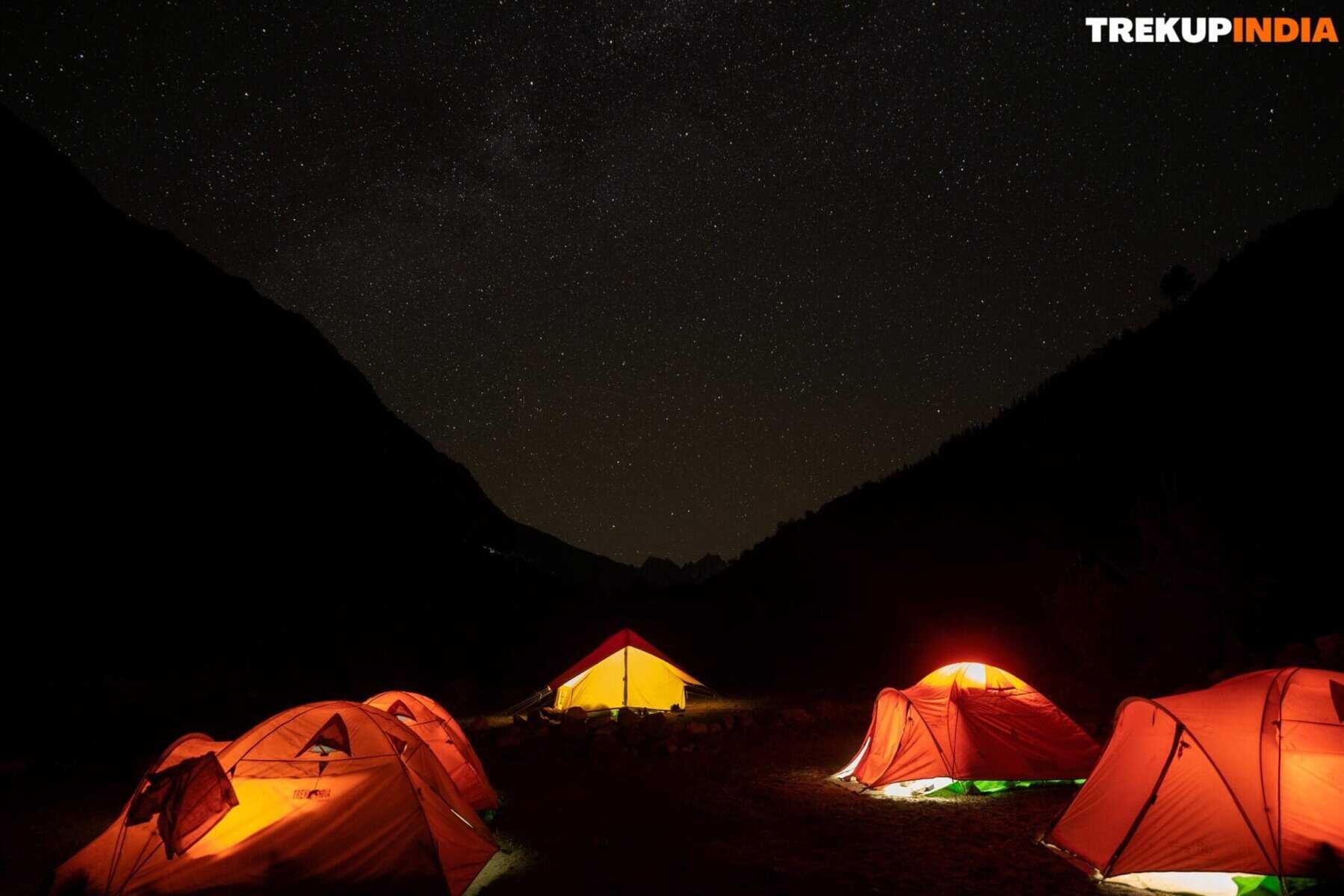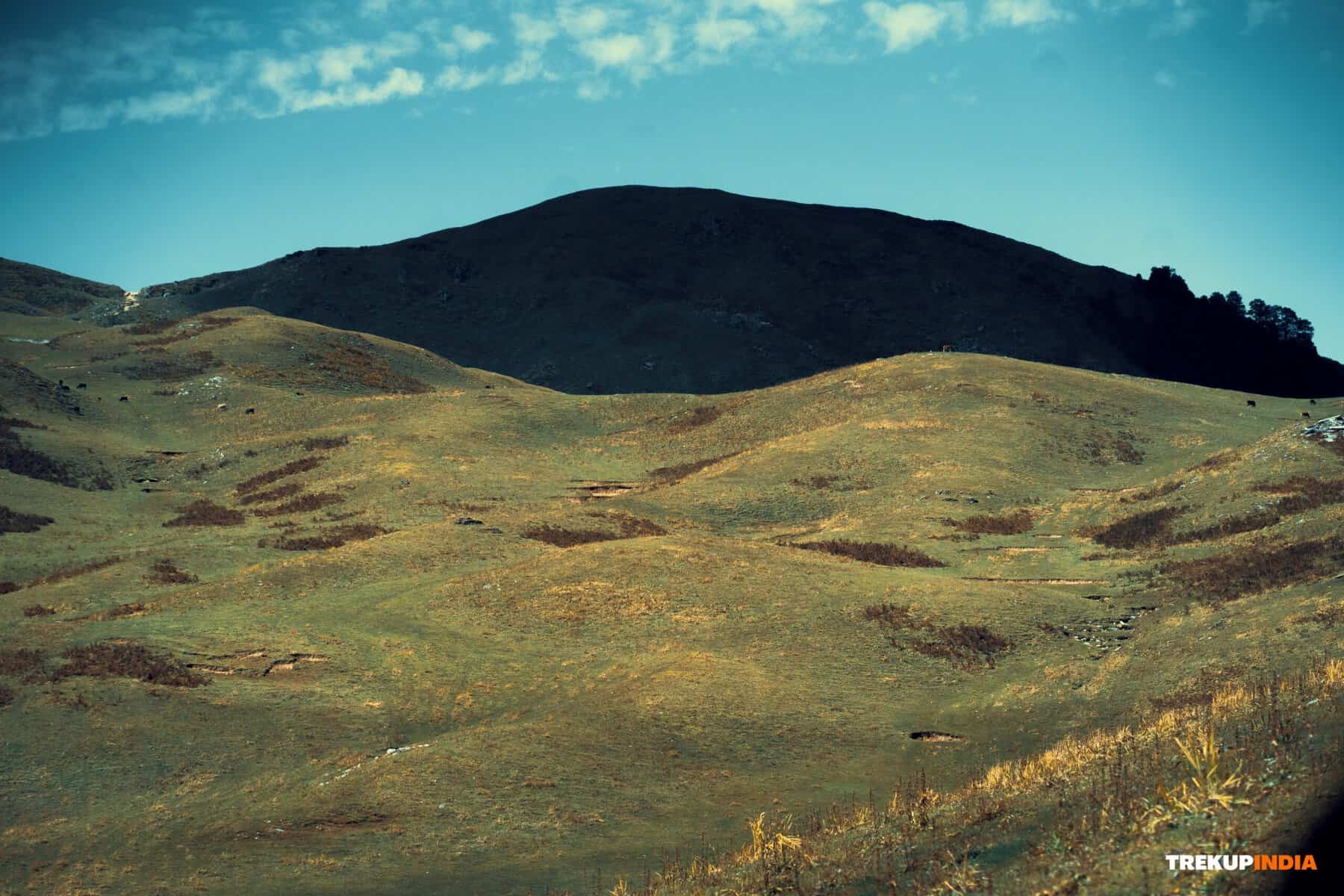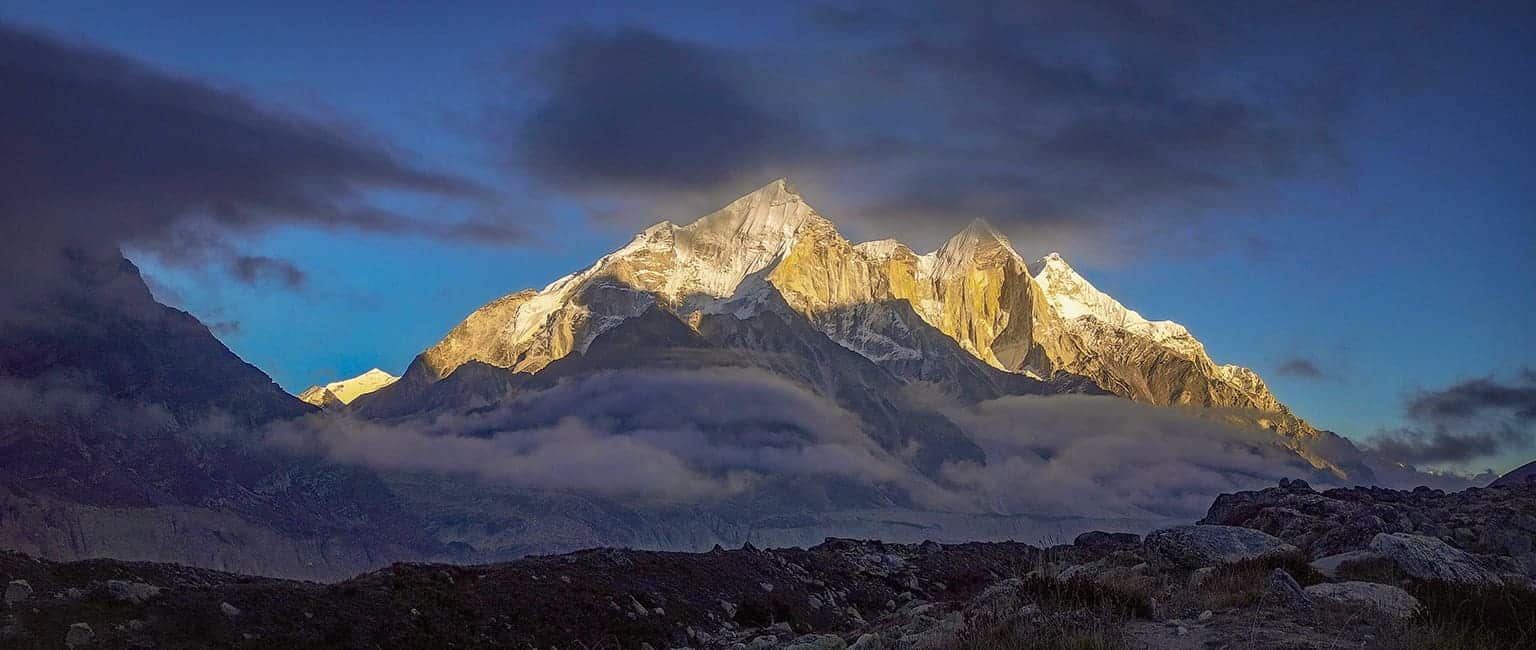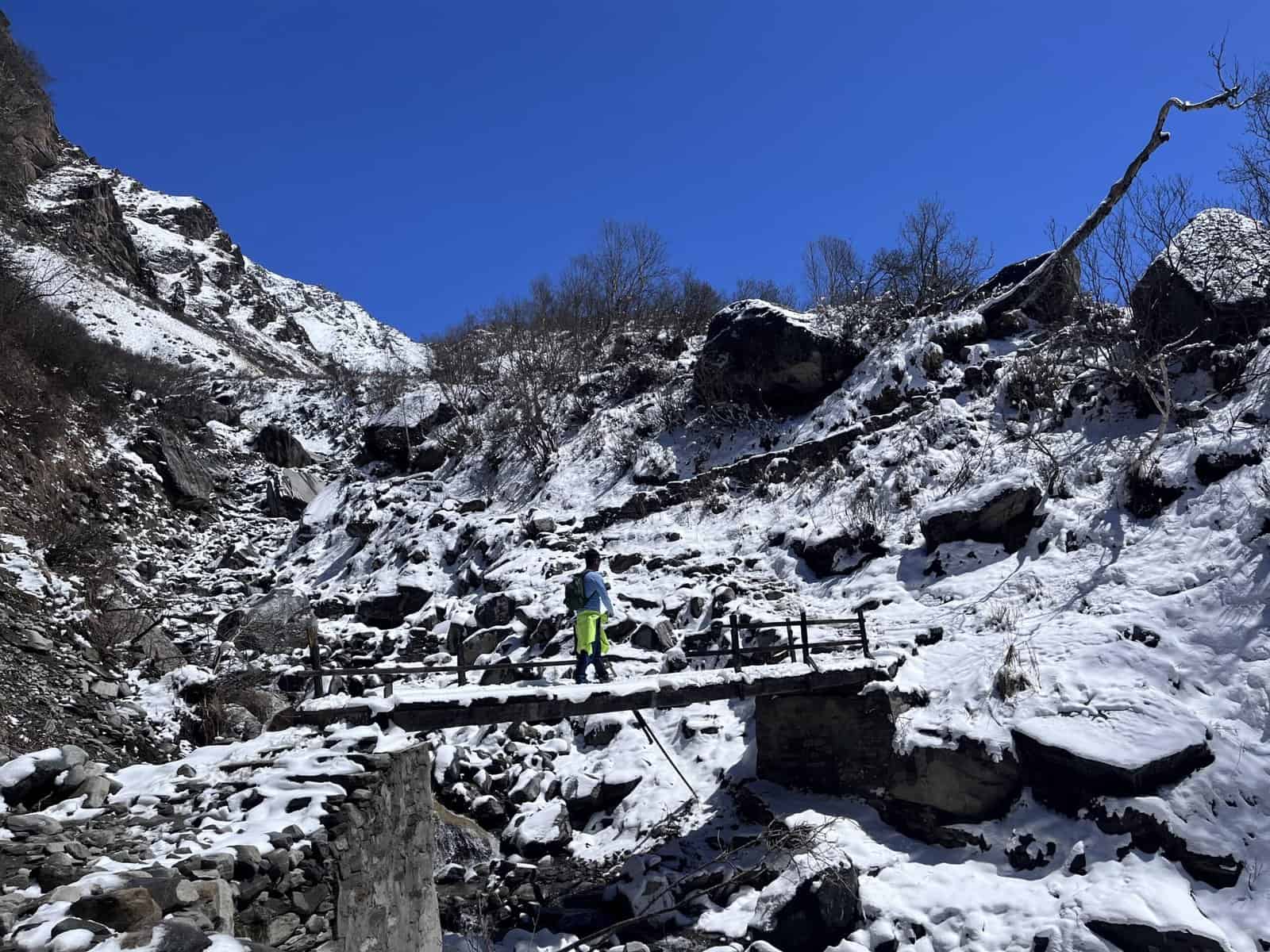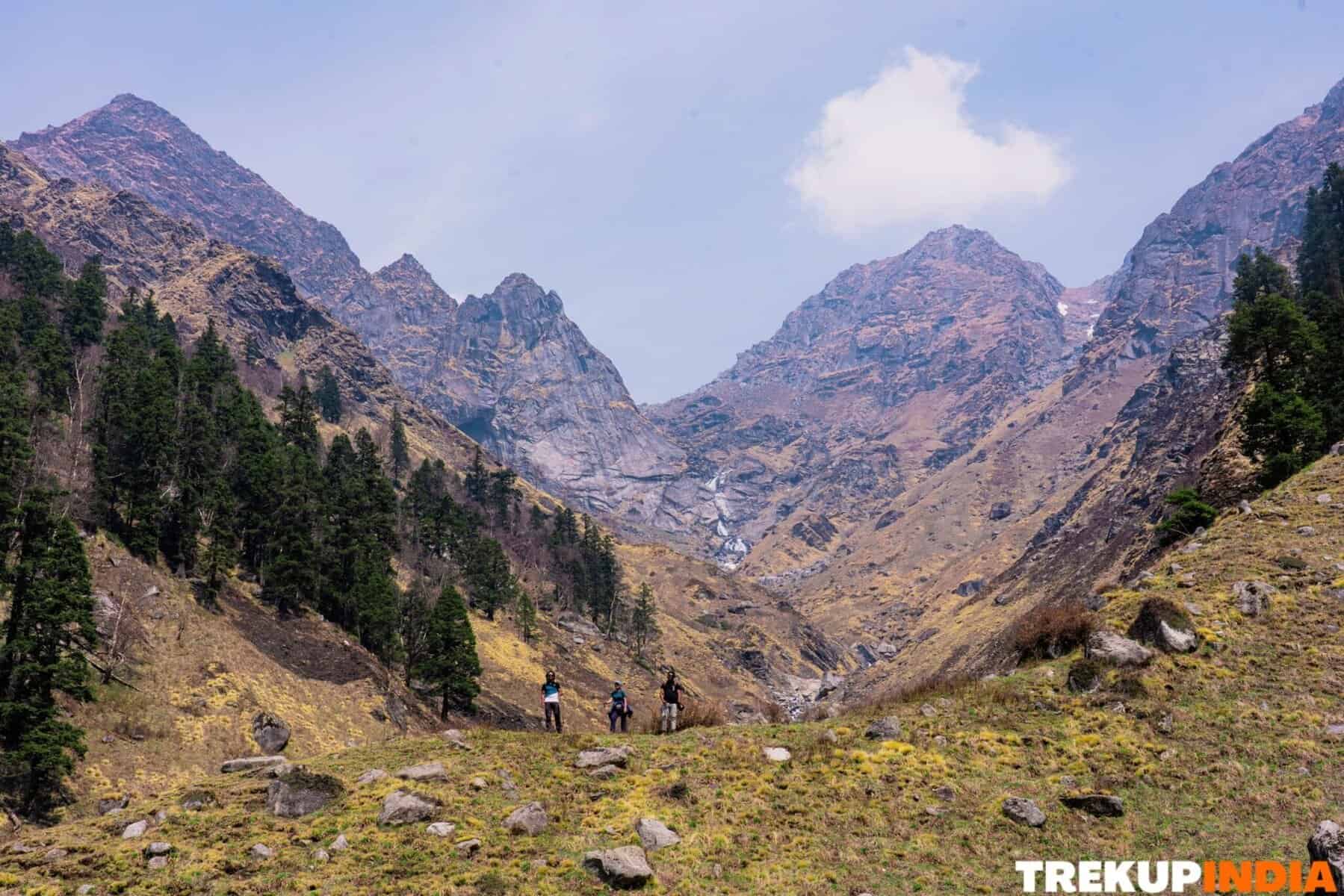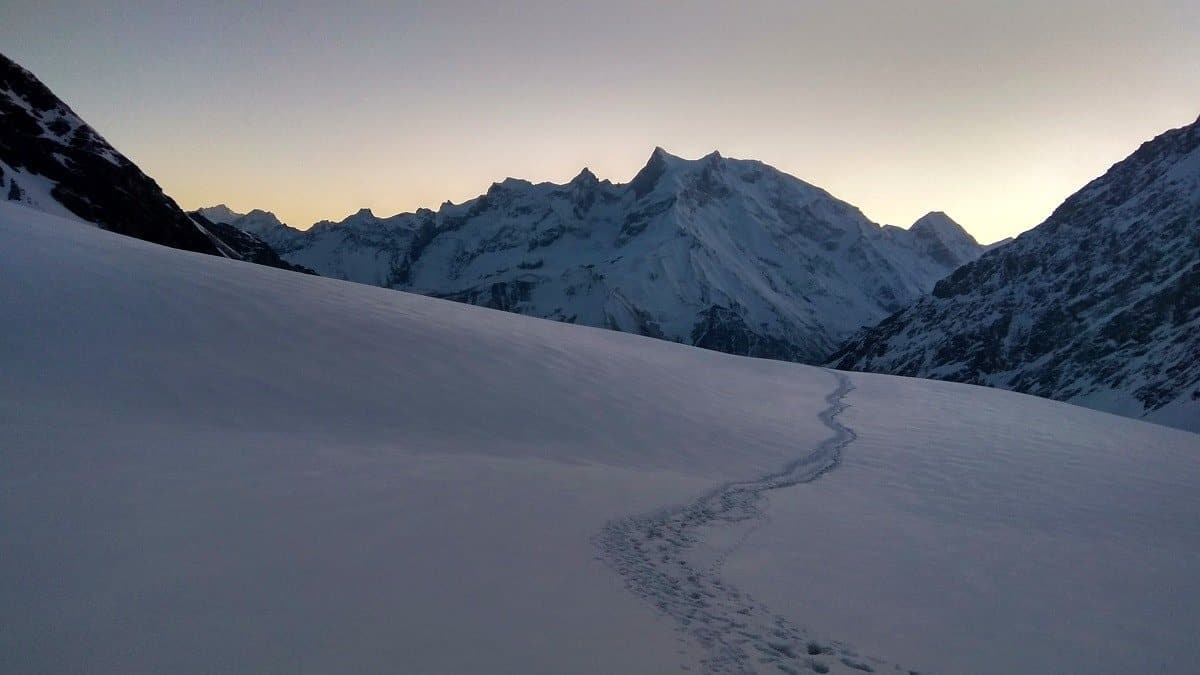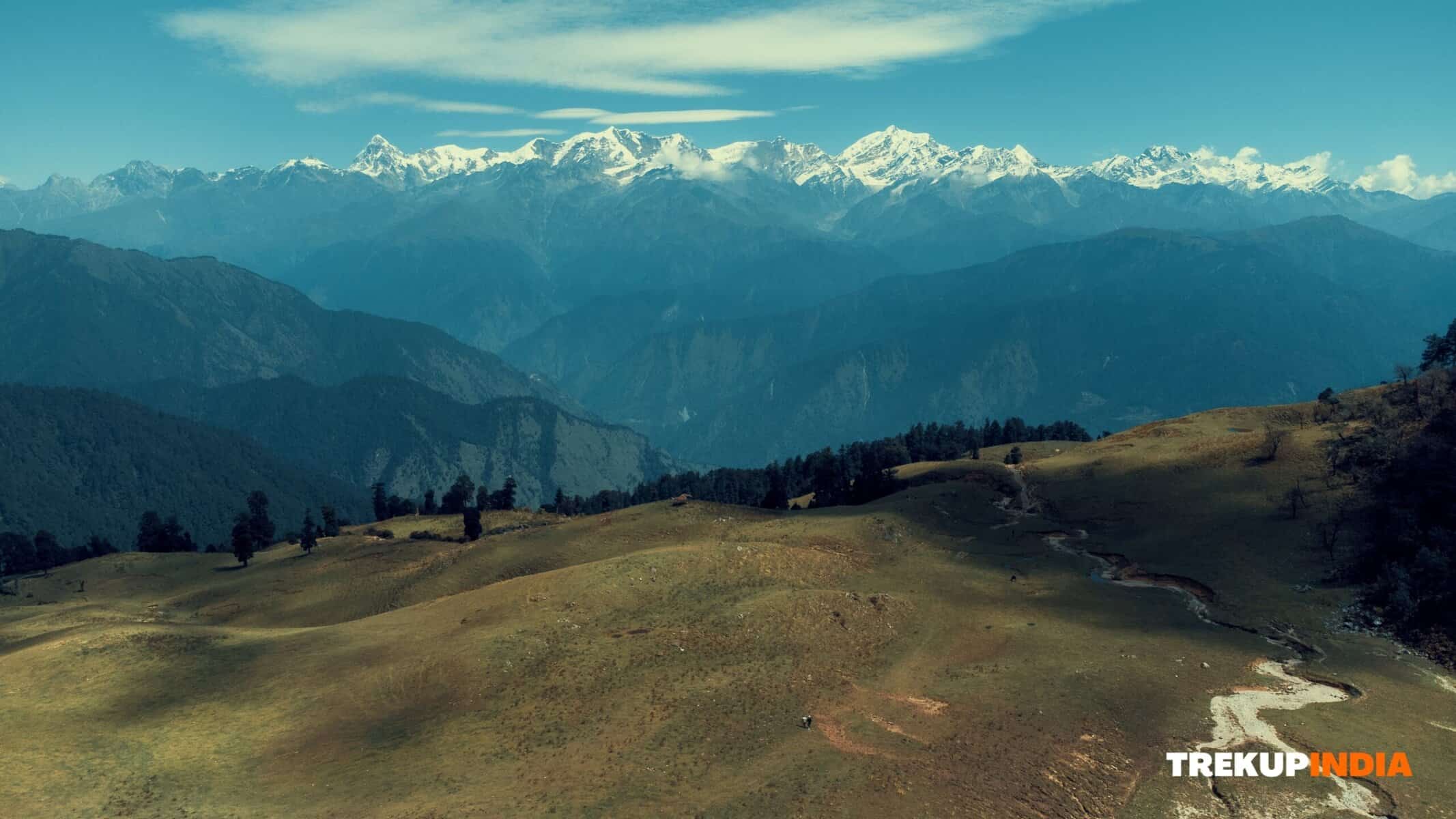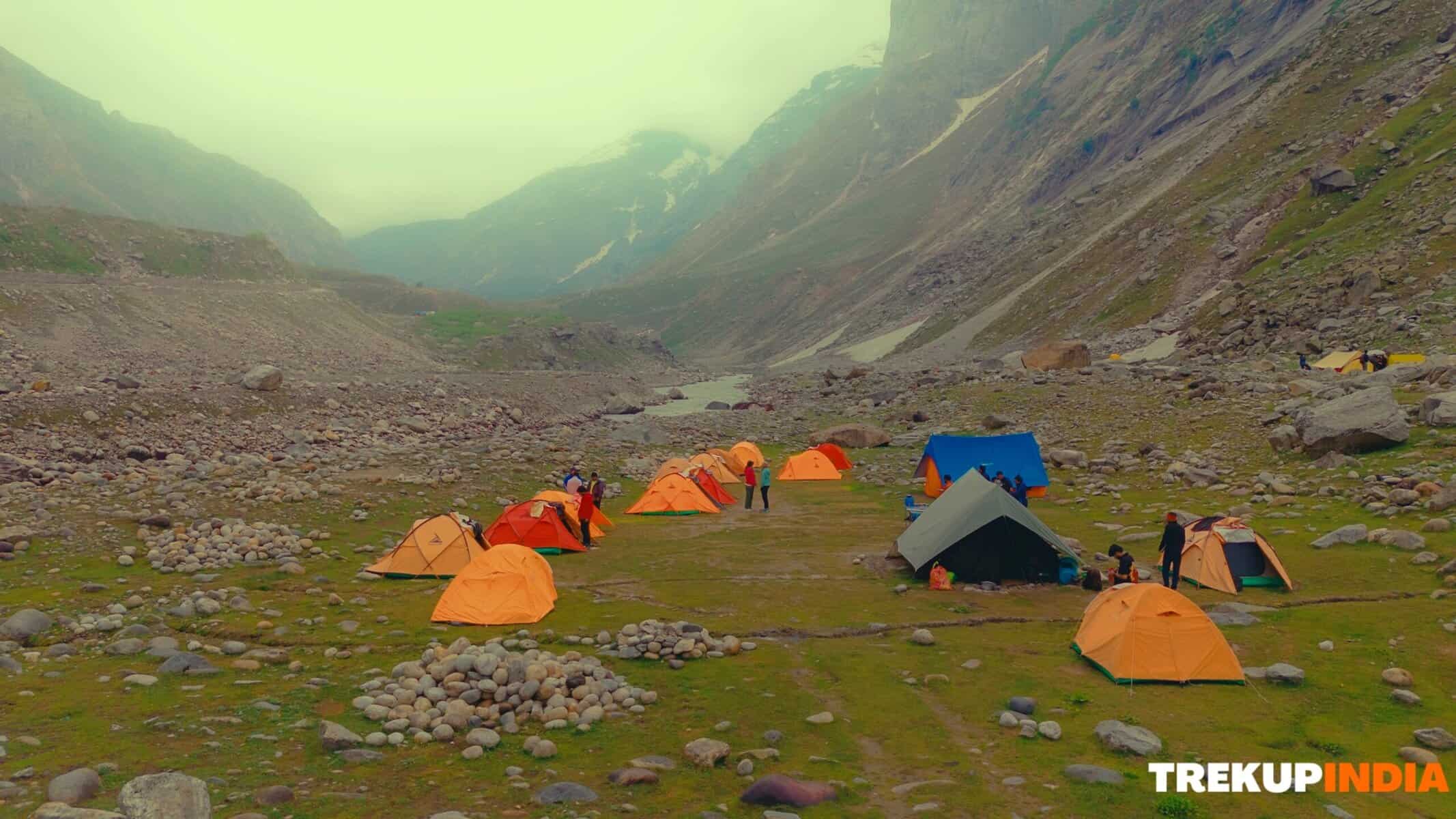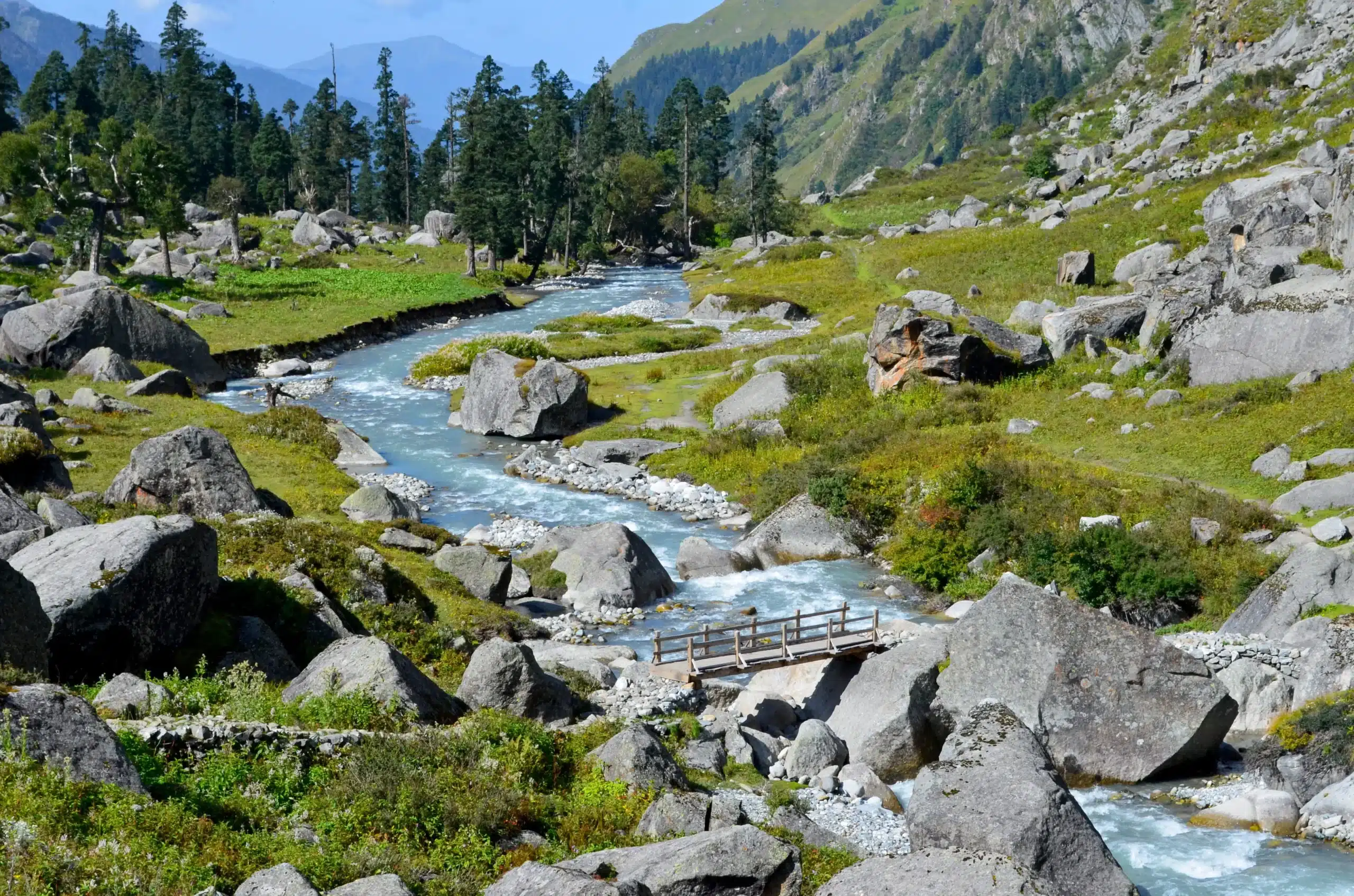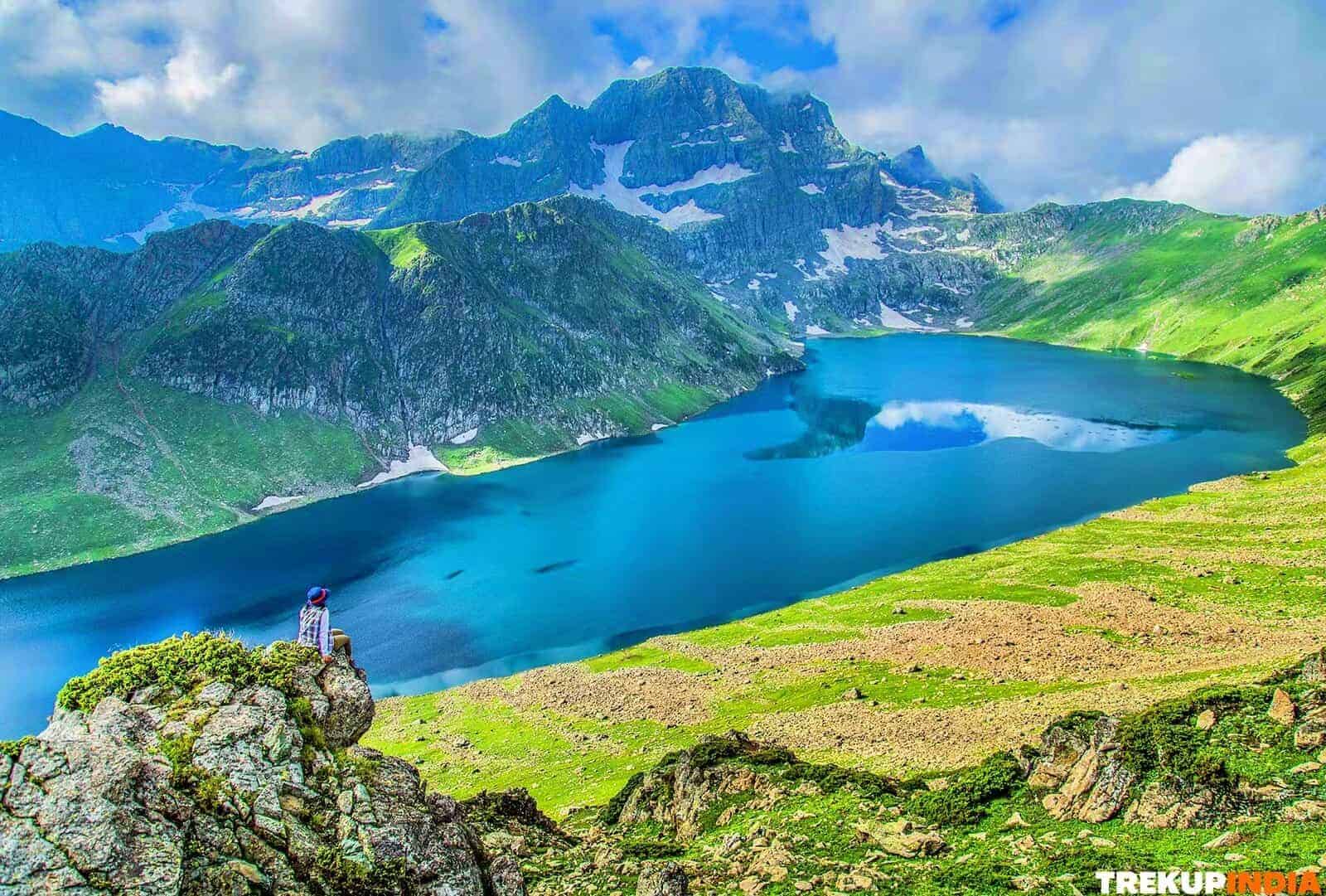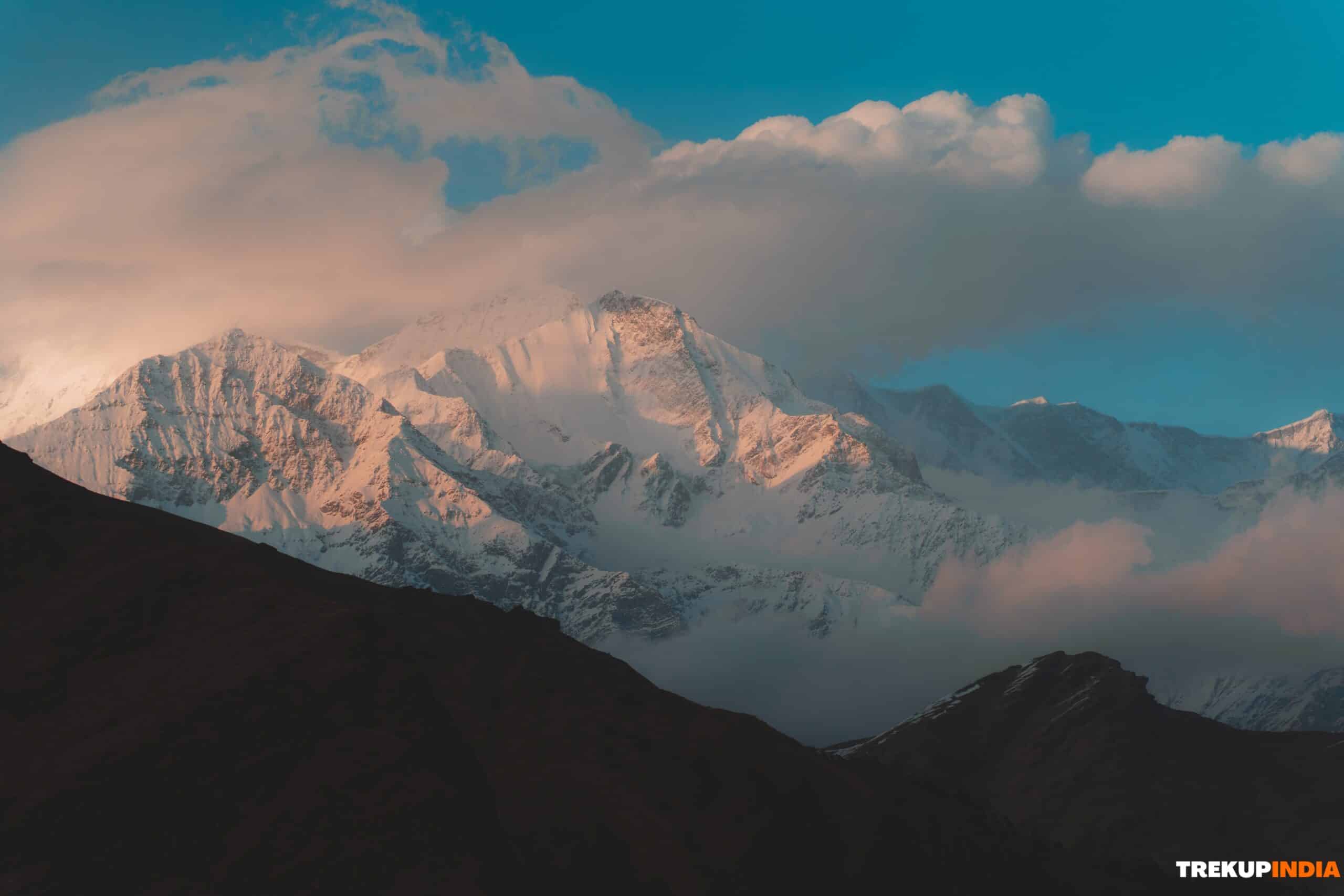30+ Years Of Trusted Trekking Expertise | Crafting Memories Since 1993
Trek Grade
Easy to Moderate
Highest Altitude
12,000 ft
Base Camp
Sankri
Best Time
Mar-June & Sept-Dec
Trek Distance
43 Km
Not sure which trek is right for you? Trekup India’s Mountain Experts have you covered.
Not sure which trek is right for you? Trekup India’s Mountain Experts have you covered. From figuring out if a trek matches your fitness level to knowing who you’ll be trekking with, we’re here to answer all your questions. Reach out to our Mountain Experts and plan your trek with confidence.
Har Ki Dun Trek
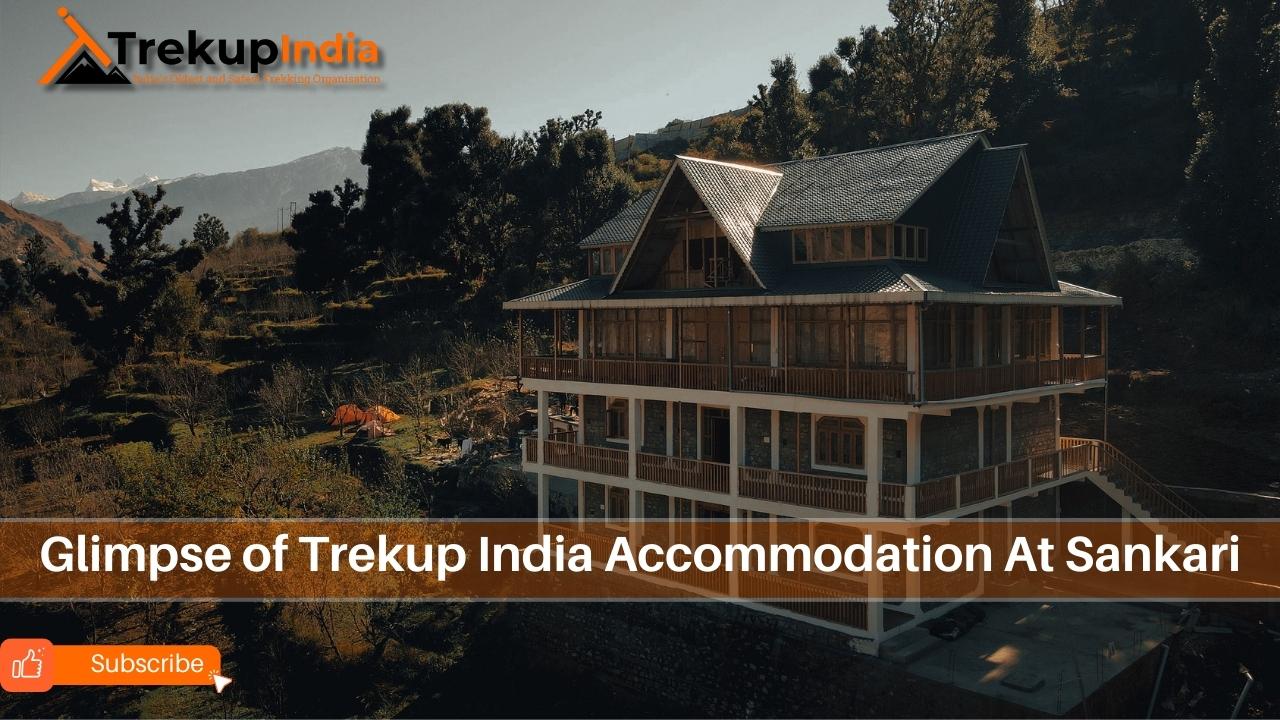
Located at 12,000 ft, Har Ki Dun Trek is one of the most mesmerizing valleys in the Garhwal Himalayas. It is also known by another name, i.e., “The Valley of Gods”. The valley is beautifully surrounded by alpine vegetation and is extremely rich in Flora and Fauna. This valley is connected to Baspa Valley through Borasu Pass and is the primary source of the Yamuna River. People from around the globe go on this trek, best experienced during the months of March to June and September to December, to experience spectacular views, attractive beauty, a calm environment, and tempting greenery. In India, this trek is considered the finest river valley trail that has never failed to entice trekkers worldwide. The exquisiteness of the valley is the primary attraction. Changes in colours in every season often make this route perfect for nature and trek lovers. During your trek, you cannot miss the wide lush valley, the culture & hospitality of the people, and the remote communities en route. An appealing view of the Laundhar glacier and the surrounding Swargarohini group of peaks makes your trek exciting and thrilling. The state bird of Uttarakhand, named Himalayan Monal, and several other animals can be spotted in the forest region during the trek. Not only this, but the valley also offers stunning views of Jaundhar Glacier, Bandarpoonch, Swargarohini Peaks I & II, and the Black Peak, which are a treat to your eyes.
Although you can trek in both winter and summer, the best time to experience nature at its best is during the pre-monsoon and post-monsoon seasons. During winters, you can find soothing greenery all around, along with snow-covered mountains. The trek is a beautiful place with striking picturesque views, and trekkers from around the world come to this place because of the revitalizing climate that soothes your mind and soul.
The God Shiva valley trek is one of the most charming and attractive valleys in the Western Himalayas. It is believed that there is a river that has yet not emerged and surprisingly, people don’t know about it. While trekking, you will come across a popular temple dedicated to Lord Someshwar. People from around the globe come to this temple to worship because it is the heavenly Valley of Gods.
In order to reach Har Ki Doon, you will go through different villages that offer an outstanding glimpse of the local life of villages along with their traditional values. The valley is definitely a delight for trekkers because it is one of the most charming and attractive valleys in the Western Himalayas. If you are fond of trekking and exploring adventurous places, then this trek should be on your list. Even if you are a beginner, you can think of trekking here because the trail is easy to moderate. But if it is your first trek then you need to be careful. It is also important to get prepared mentally and physically for the trek. Before 3 to 5 months of the trek, you need to start a regular fitness routine and prepare your body accordingly for the trek.
Read More.....
TREK INFO
Duration: 7 days
Trek grade: Easy To Moderate
Trekking distance: 40 KM
Maximum altitude: 12,000 Ft
Nearest airport: Jolly Grant (Dehradun)
Nearest railway station: Dehradun
Mode of transport from Dehradun: by taxi from dehradun to Sankri
Best Time for Treks: March-June/Sep-Dec
It is necessary to understand that this is a traversed trek and with a little bit of hard work and dedication, you can complete this trek in a hassle-free manner. During the trek, you will get the chance to camp under the bright night sky along with a bonfire. You are also going to pass through small streams and witness the grazing grounds of the cows and horses. While trekking, stop for a while in order to meet the friendly locals of villages and learn about their daily life, which is quite different from yours.
After reaching Sankri, don’t forget to witness the regal sunrise that will surely leave you speechless. For all the adventure seekers and nature lovers, this trek is a paradise. Don’t forget to carry your camera during the trek in order to capture some beautiful shots that you will cherish throughout your life. Every morning before leaving for the trek, energize yourself with a hot cup of tea or coffee. Something that you just cannot miss during your trek is the mesmerizing sunrise and sunset.
Early snow in the month of November and an abundant amount of residual snow during the spring season make this valley a captivating choice for trekking. Also known as the hanging valley, the trek takes you through some of the most gorgeous scenes that are beyond your expectations. If you are planning your trek, then get ready to immerse yourself in the attractiveness of the region with the dense alpine forests as well as the picturesque sight of the mountains.
If you are a nature lover and adventure hunter, then this trek is definitely heaven for you. During the trek, get ready to capture some beautiful pictures. Before you head for the trek, make sure to revive yourself with a cup of hot tea. One of the best things about this trek is that it is accessible in both the summer season and winter season. The trek is also called ‘The Valley of Gods’ because it is believed that Pandavas took this route in the Mahabharata on their ascent to ecstasy.
The path takes you through ancient villages that are almost 2,000 years old, giving you an insight into the lives of residents located in the valley. However, the biggest challenge of the trek apart from 6 long hours of trekking is fighting with recurrent rain. Due to this reason, it is important for you to carry all the rain trekking essentials such as waterproof covers, water-resistant trekking boots, poncho, and most importantly, anti-diarrhea medicines before beginning the trek.
Therefore, this trek keeps on giving you vibes of visiting heaven, irrespective of the conditions of this trek.
Trek Cost
-
Twin-Sharing Tent Accommodation Provided
-
Pickup time 6:30 A.M. from Prince Chowk, Near Dehradun, Railway Station
-
+₹1500 Extra For Transport
Fix Departure Dates!
Trek Cost Inclusions and Exclusions!
Trek Cost Inclusions
- Stay: 4 Nights of tented accommodation at individual campsites of Trekup India on twin sharing and 2 Nights stay will be at Trekup India Luxury Hotel on multi sharing basis.
- Meals: Trekup India will provide freshly cooked meals during the trek starting with Dinner on Day 1 to tea, coffee on day 7 (Meals are simple, nutritious, and vegetarian)
- Transport Optional: Dehradun to Sankri and return. ( 1500 extra )
- Trek Insurance Optional: (Trekup India recommends each trekker to get insurance) you can read more about What Is Trek Insurance, Why It Is Mandatory On Treks And What It Covers .
- Trek Equipment: Sleeping bag, Sleeping tents, Kitchen tent, Dining tent, Toilet Tent.
- Amenities: All utensils, sleeping mattresses (Black foam mats), Crampons, and Gaiters for snow.
- Health & Safety: First Aid Box, Oxygen Cylinders, Stretchers, Oxi meters, BP Machines, health.
- Permits: Forest Permits and Camping Permission Fee
- Trek Crew: High Altitude Chef, Helpers, Trek Leader & Guides, and other support teams.
- Potters & Mules: Potters and Mules are to carry all trekking equipment, ration, and vegetables.
Trek Cost Exclusions
- GST 5% (it is Mandatory)
- Any Meals/accommodation beside the itinerary or not mentioned in the program.
- Any Bus / Airfare to/from trek start/end point
- Personal Medical expenses do carry your medication.
- Any personal services such as Laundry, phone calls, liquors, mineral water, etc.
- Any still / video camera fee
- Any Entrance fee Monuments, Monasteries, Museums, Temples – Pay directly on the spot.
- Backpack Offloading (Mule/Porter Charges)
- Offload Charges: ₹2100 per bag for the full trek if paid online in advance.
- On-spot Payment: Charges may increase by up to 30% if paid at the base camp.
- Weight Limit: Each bag must not exceed 10 kg.
- Note: Offloading is optional and is recommended for those who prefer to trek with a lighter daypack.
- Any emergency evacuation charges
- Any services that are not mentioned in the cost inclusion section.
Har Ki Dun Trek Videos
If you are planning to go on a trek and want to make sure that you are well-prepared for it, here are some excellent videos available online that you can watch. These videos are created by Trekup India Mountain experts in the field and offer valuable insights and tips on everything from what to pack, how to train, and how to stay safe while on the trail. By watching these videos, you can gain a better understanding of what to expect on your trek and feel confident that you are fully prepared to tackle any challenges that may arise. So, if you want to have a successful trekking experience, be sure to check out these informative and helpful videos.

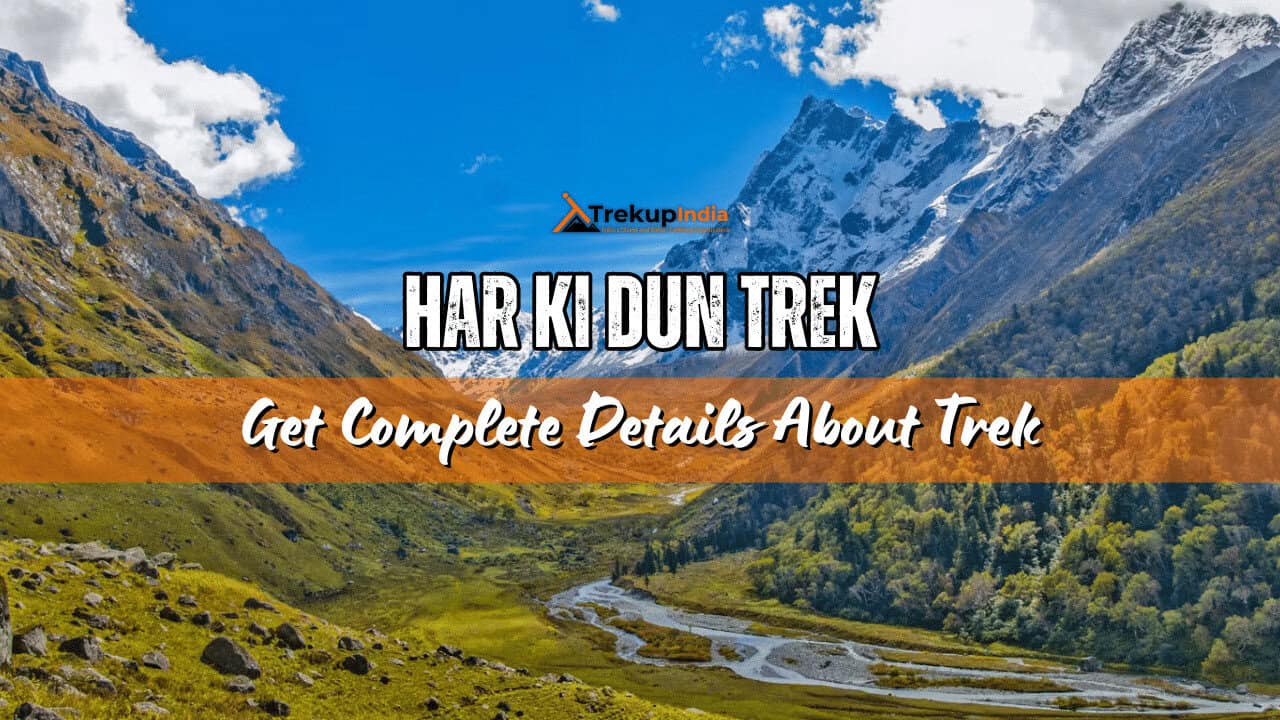
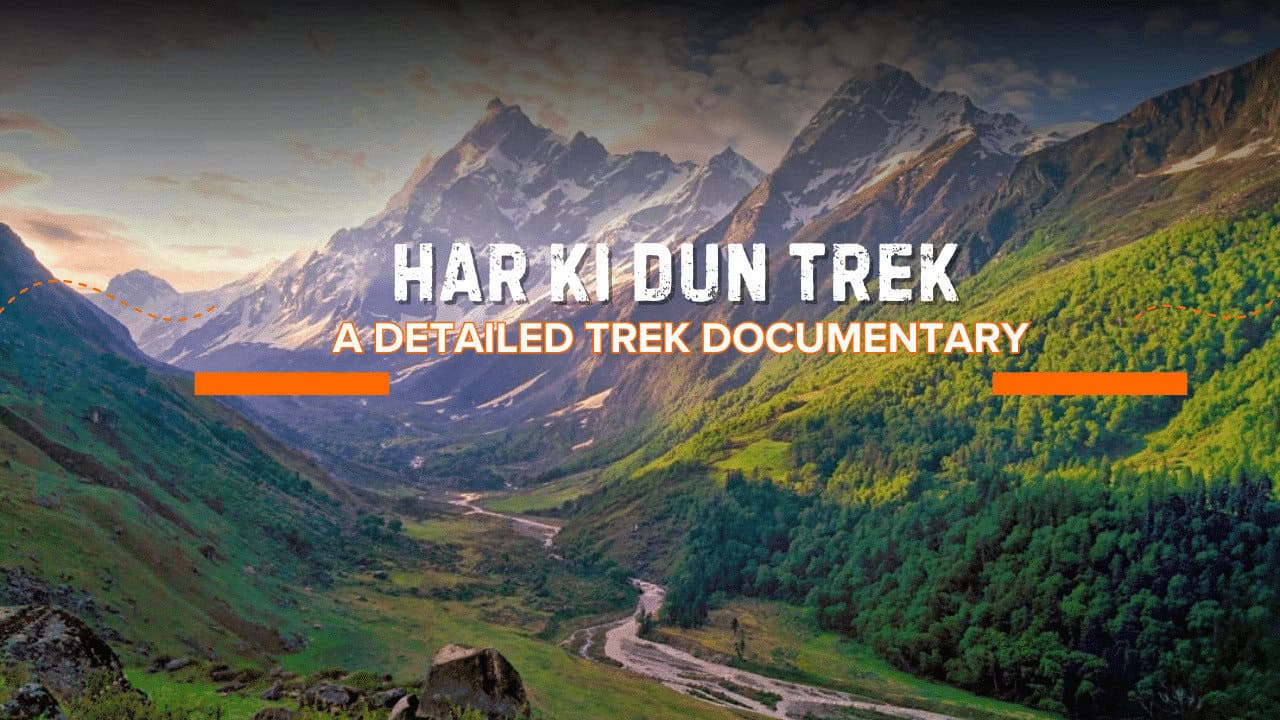
Want To Trek Like Pro?
Basically, watch these videos if you want to trek the same way professional trekkers do and make your skills better. These videos contain useful tips and techniques to further improve your trekking skills itself. These videos actually help both new and experienced trekkers improve their trekking skills. These videos definitely provide useful tips that make your trek better. We are seeing that these videos by Trekup India experts will only help you make your trekking skills better.







Know Everything About Acute Mountain Sickness
Acute Mountain Sickness occurs when people trek to high altitudes above 8,000 feet. This condition itself develops further due to reduced oxygen levels at such heights. Basically, as you go higher up, the air pressure and oxygen levels decrease, which causes the same problem. Acute Mountain Sickness surely causes headache, nausea, vomiting, and dizziness in affected persons. Moreover, peoples also experience difficulty in sleeping during this condition. To avoid mountain sickness, you should actually trek up slowly to higher altitudes. To learn further about this condition itself, watch the videos by Trekup India.

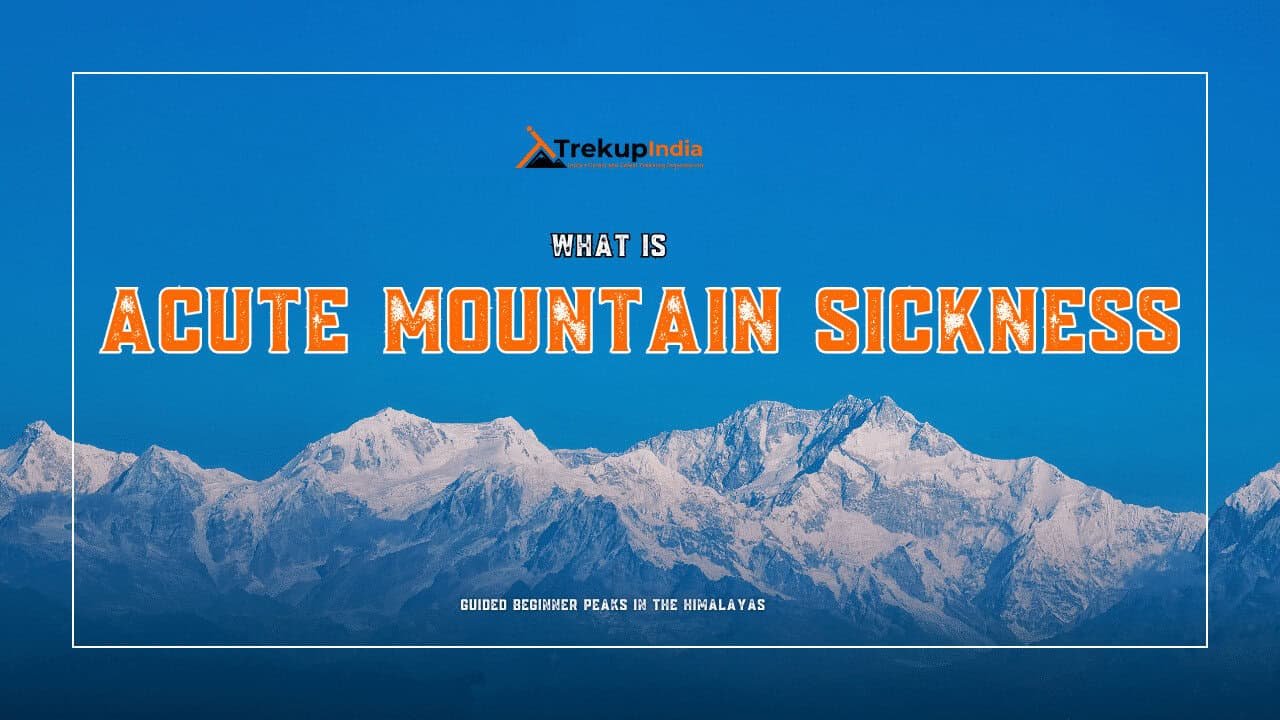
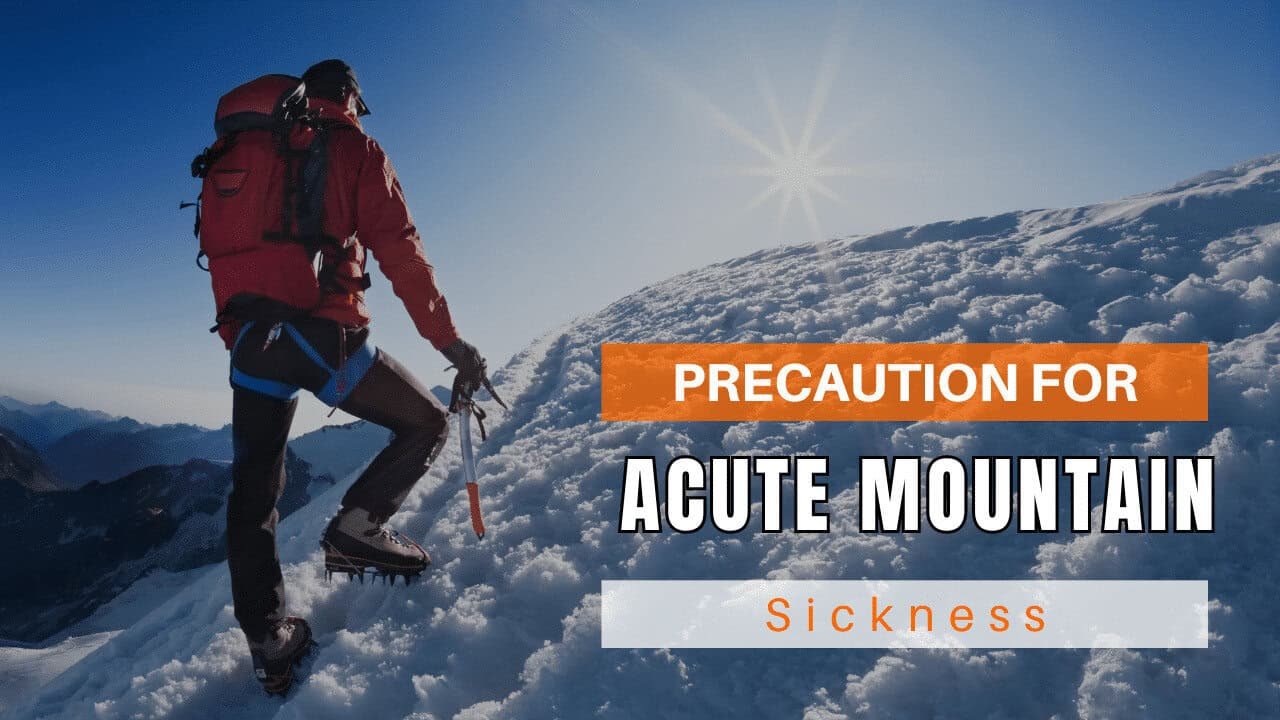
Day Wise Detailed Itinerary of Har Ki Dun Trek
Day 1: Arrival Day - Dehradun to Base Camp Sankri (210km drive)
- The drive to the destination will be a long one, of almost 10 hours, covering a distance of 210kms.
- The last ATM on the way is located at Purola.
- You may come across several small shops along the way where you can buy snacks.
- You will be staying at a Trekup India Luxury Hotel.
- We will arrange a taxi for our trekkers to reach Sankri from Dehradun.
- You are expected to reach Sankri by evening.
We will depart from Dehradun and travel to base camp Sankri, which is approximately a 210km drive through the Yamuna and Tons valleys. Along the way, you will cross the Yamuna bridge and enjoy gorgeous views of dense pine forests.
The journey to Sankri is a visual delight, winding through some of the most scenic spots in the Himalayas. You’ll pass through the charming hill station of Mussoorie, the serene beauty of Nainbag, the tranquillity of Damta, the lush greenery of Newman, the serenity of Mori, the quaintness of Purola, and the natural beauty of Netwar.
It’s worth noting that Sankri is nestled in the Govind Wildlife Sanctuary of the Uttarkashi district. It’s a tranquil village with a mini market and wooden huts that serve delicious food. You’ll also find apple orchards and lush greenery all around, offering a serene escape from the hustle and bustle of city life.
Once you reach the base, you’ll enjoy a pollution-free environment and spectacular views of snow-covered mountains. By evening, you’ll arrive in Sankri and witness the breathtaking sunset behind the mountain ranges. You’ll have a fantastic view of all four peaks in the Swargarohini range from the base camp.
Sankri, a small and picturesque village, is your base camp. With around 250 houses and a few dhabas and shops, it offers a cozy and intimate setting. From here, you can witness the sun setting behind the majestic Himalayas, with the peaks of Swargarohini glistening in the evening sun, standing tall over the ridges beyond Sankri.
You’ll spend the night in Trekup India Hotel at Sankri, under the enchanting sky filled with millions of stars.
Day 2: Sankri to Dharkot Village by 16 km drive & Trek From Dharkoat Village to Seema (4 km trek)
- To reach Dharkoat village from Sankri, you need to drive for 16 km which takes approximately one and a half hours.
- The altitude of Taluka is around 7,000 ft/2,100m.
- The trek distance is 4 km which takes around 4 hours to complete.
- Along the trek, you will come across several spring-water points.
- Packed lunch will be provided during the trek.
- The trek level is easy, with a few parts having a gradual ascent.
- You will spend the night in a camp and have a delicious dinner.
Start your day with a hearty breakfast and embark on a unique journey to Dharkoat village. The early morning drive from Sankri to Dharkoat is a sensory delight, taking you through dense forests, picturesque water streams, and the vibrant cultural village of you’lleer. The melodious chirping of birds will serenade you as you keep an eye out for rare mountain species, including the state bird of Uttarakhand, the central “Himalayan “Monal”, often spotted in the area of Taluka.
Prepare to be amazed by the stunning views of sprawling wild orchids. And if luck is on your side, you might just come face to face with the wildlife of the Himalayas, including Leopards, barking deer, boars, and many others, adding an element of thrill to your journey.
As we drive from Sankari to Dharkoat village, we pass through the quaint village of Taluka. This small yet enchanting village is adorned with traditional house structures and a handful of dhabas serving delectable local cuisine. Upon reaching Dharkoat, we take a well-deserved rest before embarking on our awe-inspiring trek to Seema, a mere 4 km away. The journey is a serene one, with nature’s beauty unfolding at every step.
On the way to Seema, you will also encounter snow at patches where the sun only gets a short time to enter. You need to know that Seema is not a village but only a shelter point for tourists.
During the trek, you will be immersed in a world of adventure. Traverse rocky surfaces, cross traditional wooden bridges, and follow the green trails, with the Supin river flowing on your left side. Each step will bring you closer to the heart of the Himalayas.
While trekking, you will also witness different animals and birds often found only in the mountains. During the trek, you will find several spots of water streams that offer fresh drinking water. By the evening, you will reach Seema via Gangar village.
Just before Seema, all the trekkers will camp on a small green field from where you can enjoy breathtaking views of nature.
Day 3: Seema - Boslo via ancient Osla village 10 km trek
- You have a long day of trekking ahead of you, covering a distance of 10km.
- The ascent will be steeper, but you will be rewarded with breathtaking views of beautiful meadows, a waterfall, and a variety of flora and fauna.
- A packed lunch will be provided for you, and there are several spring water points along the way to keep you hydrated.
- You will reach Boslo by evening.
- You will be staying in a campsite with mesmerizing views of nature.
The trek from Seema to Boslo is approximately 10 km long and takes around 6-7 hours to complete. It begins early in the morning at 6 a.m. after breakfast. After 45 minutes, you will reach Oslo village, located on the opposite shore of the river. You can take beautiful photos at the Seema Bridge, a hanging bridge that crosses the Supin River, with the backdrop of the snow-covered mountains. Along the trail, you will pass three hydroelectricity run chaffing units used by villagers to separate husks of maize and millet and grind them into flour. The path winds through harvest fields, grazing cattle, and slant roofed houses used for granaries and storage. You may also spot Amaranth trees, which take on an orange-red hue during the monsoon season, creating a striking contrast to the landscape.
Within half an hour of the trek, you will be able to see a fantastic panorama of Mt. Bandarpoonch and the Swargarohini mountain ranges. The tranquil village of Osla lies between cashew nut and walnut forests. It has rich mythology associated with it. According to the belief, in ancient times, the Osla village was home to one clan loyal and dedicated to Duryodhan of the Kauravas, and they constructed a temple to him. Today, they teach Duryodhan in the village. Additionally, the village is home to a 2000-year-old Someshwar Temple and a few houses. The temple has a unique design, and villagers are very welcoming here. They dress according to their culture and customs. The village has one king who visits every month, during which the main pooja ritual is conducted. After a brief chat with the villagers, the hike continues up the hill.
From Osla, the trail gets steep. You will have stunning views of The Dhauladhar Range from the incline. The paths that lead to Borasu Pass and Baspa Valley can also be seen from this point. The high trail winds further down, reaching a tabletop green stretch of Kalkatidhar. Kalkatidhar is a gorgeous open meadow with stunning views of famous peaks such as Bugyal Devsu and Mt. Black Peak. On the left side, you will be able to look out over the Ruinsara Range and the Kedarkantha Summit. Take a rest, enjoy the view, and get ready for the summit the next day.
Day 4: Boslo to Har Ki Dun to Maninda Lake and back to Boslo ( via 12 kms both side)
- Trekking: 12km, 5-6 hours.
- The ascent is easy till Har Ki Dun summit and then moderate till Maninda Lake.
- Moninda lake is surrounded with small meadow, and some bueatifull colourful flowers.
- The trail is mixed with boulders and meadows, and there are rhododendron bushes all around.
- You can also see a waterfall along the way.
- Water sources are sufficient throughout the trek.
- You will have lunch en route, and a light lunch will be provided on site. Trail is mixed with boulders and meadows, and there are rhododendron bushes all around. You can also see a waterfall along the way. Water sources are sufficient throughout the trek.
You are starting early today for the trek, as it’s the longest day. After breakfast, you’ll begin the trek. While the views have been stunning until now, be prepared for more. The trail will lead you into the glacier basin with mountain meadows and moraines. Large pine trees will greet you at every step.
The trail starts by climbing up to the intersection between the Supin River and the River from the Ruinsara Valley. From here on, you’ll be able to enjoy stunning views of the mountains. The trail is a mix of moderate and steep climbs to reach the Har Ki Dun valley. As you ascend, you will see icy snow patches and snow-covered waterfalls. In winter, these areas are covered in dense snow.
The Har Ki Dun Valley is a fantastic place that displays incredible beauty all in one glance. The massive mountains that comprise Swargarohini, Hata Peak, Black Peak, etc., offer breathtaking views. It is an excellent mixture of meadows and coniferous forest, frozen streams, glacier moraines, and the backdrop of gigantic mountains. The trail eventually ends at an elevation of 45 degrees and isn’t as steep as it appears; in the presence of snow, it becomes ever more complex. The final part of the hike ascends an eddy and through dense forests until it reaches the Har Ki Doon summit. From the summit, you can see stunning perspectives from Swargarohini I peak, Hata Peak and Black Peak.
Marinda Tal (also known as Morinda Tal) is a stunning high-altitude lake accessible after reaching the Har Ki Dun valley. It appears stunning with Hatta and Swargarohini mountain as a backdrop. Once you have explored the valley and created memories that will last a lifetime, you’ll return to your final campsite at Boslo.
Day 05: Boslo To Seema Campsite by 12 kms trek
- Trekking back to Seema early in the morning
- Breathtaking views of the landscape
- Packed lunch
Embarking on your return journey to Seema from the captivating valley, you’ll commence your trek early in the morning, post a satisfying breakfast. The sun, just beginning to rise, and the invigorating morning air will set the stage for your adventure. The trail, winding through dense forests and challenging rocky terrain, will reward you with breathtaking views of the majestic mountains and serene valleys.
By late afternoon, you will reach Seema and settle into a serene campsite, a true oasis nestled amidst the lush greenery of the valley. It offers a perfect vantage point to witness the sunset over the mountains. The sight is truly awe-inspiring, with the sun casting a warm glow over the peaks and the sky painted in hues of orange and pink.
As the evening unfolds, you’ll be treated to a delectable dinner featuring local delicacies that will tantalize your taste buds. This culinary delight will be the perfect culmination of a day filled with adventure. Afterward, you can retreat to your cozy tent for a restful night’s sleep. But not before taking a moment to soak in the valley’s beauty and the mountains that guard it.
Day 6: Seema to Dharkoat Village via 4 kms trek & Dharkoat to Sankri base camp via 16 km drive
- You will be trekking back from Seema to Dharkoat Village, which is a distance of 4km.
- During the trek, you will be served with hot and delicious food.
- Once we reach Dharkaot, we will drive to the Sankri base camp, which is a 16km drive.
- You will be staying at the guest house during your time at the Sankri base camp.
This is the final day of your Har Ki Dun trek, so take time to appreciate every minute. Get up in awe inspiring mountain views and have a nutritious breakfast. Enjoy the cool breeze of the Himalayas, and then get yourself ready to take on the last stretch of your trek.
The trek from the Seema campsite to Gangaad / Dharkoat is a gentle downhill trail that makes it straightforward. You should concentrate on your technique for descending, doing small steps to avoid placing too much pressure on your feet. You should take small breaks along the way to take in the breathtaking scenery and take a break in the serene atmosphere.
The path winds through stunning forest with magnificent Oak and Deodar trees, which provide tranquil shade as you trek. You can see snow-covered Himalyan Peaks from gaps between the trees. The varied landscapes that change from thick forests to expansive spaces provide an engaging and memorable trek.
After trekking through the beautiful landscape for about two hours, you’ll arrive in Gangaad / Dharkoat, where a jeep/camper waiting from Trekup India will be ready for transport back to Sankri. The trip between Gangaad and Sankri is about 2 hours long, giving you time to relax and think about your journey. When you return to Sankri, enjoy the final views of the mountains and cherish the memories that your trip has created.
After arriving at Sankri, check in at Trekup India hotel and remember the accomplishment of completing the hike. Enjoy a delicious dinner with your fellow trekkers, sharing stories and laughs while you reflect on the trek. After enjoying a delightful dinner, you can settle down in your cosy bed for an unwinding night’s rest, content knowing that you’ve made it through a thrilling journey in the Himalayas.
Day 7: Departure from Sankri to Dehradun
- Depart at 7 A.M after having tea, coffee, and biscuits
- The journey from Sankri to Dehradun is approximately 210km
- It’s a long drive of almost 8-9 hours, so it’s better to be prepared
- You can expect to reach Dehradun by 6 P.M
- Make your travel bookings accordingly, whether it be trains or flights from Dehradun
This is the day that marks the end of our amazing journey, and it’s now time to go back to Dehradun taking with us numerous memorable memories.
For a speedy starting point for the day’s long journey, leave from the hotel at 7 A.M. Transfers will be offered for you to travel from Sankri and back to Dehradun which is approximately 220 km that could be around 8-10 hrs long, dependent on the condition of the road and conditions.
As we travel back take in the beautiful sights once more. The winding roads that weave across the hills, lush vegetation, and the charming villages that you see remind you of the trip you recently completed.
We expect to arrive in Dehradun around 6:30 or 7:30. So you should plan your next journey accordingly.
When you arrive at Dehradun Take a moment to think about your amazing experiences, the challenges that were overcome and connections created on your way. The trip will leave lasting memories for you and we are looking for the opportunity to welcome us back to another adventure! trek!
We’ve prepared a comprehensive trek route map for your upcoming adventure to Har Ki Dun Trek, which outlines the entire journey including all stops and trails. This map provides detailed information on the terrain, distance between points of interest, and estimated travel time to help ensure a safe and enjoyable trek. We’ve carefully curated the map to ensure that you have all the necessary information at your fingertips. Please take a moment to review it thoroughly, and don’t hesitate to reach out if you have any questions or concerns.
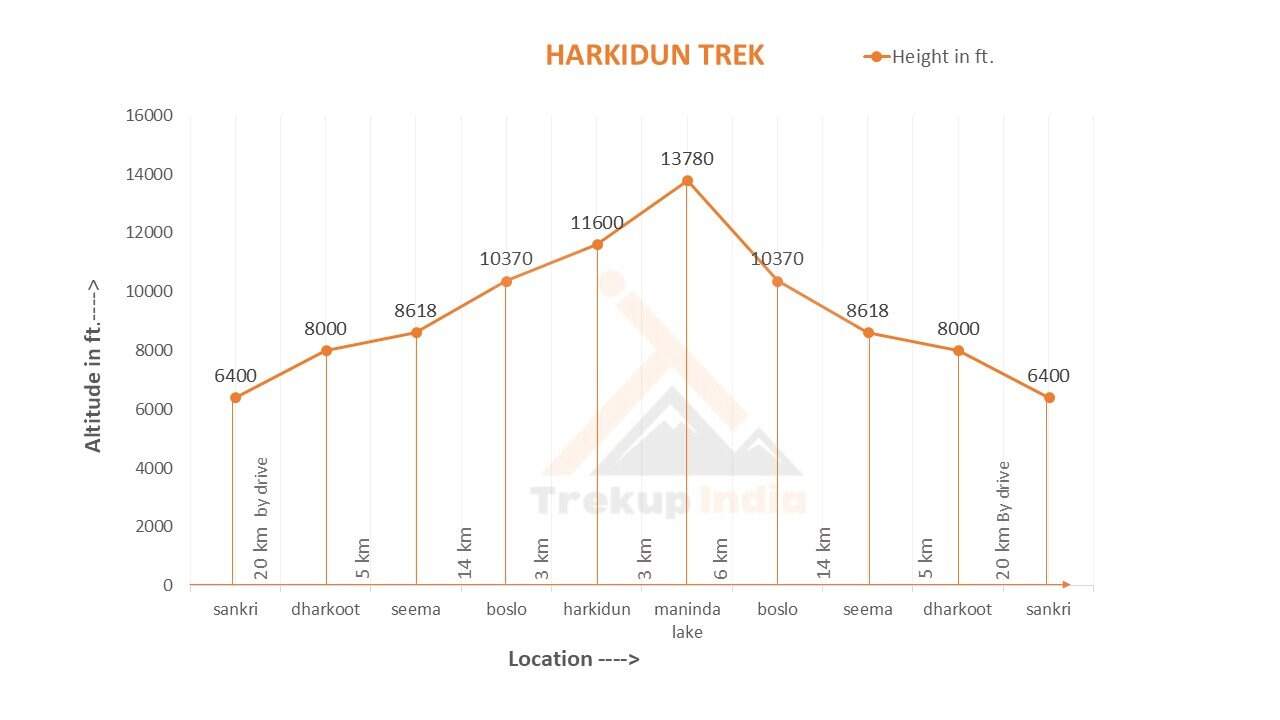
This Har Ki Dun Trek Altitude Chart is a useful tool for Trekkers to monitor their altitude changes during their rides. It allows them to plan their routes more efficiently and track their progress over time. This Altitude chart is beneficial for both casual and experienced Trekkers, helping them make the most of their trek experience.
What should you pack for the Har Ki Dun Trek
Har Ki Dun Trek is a high-altitude trek. The trekking gear you have to have for this particular trek differs from normal treks. Thus, read this whole segment. There is an important question that the trekker who is doing trek asks, like what all things to carry while trekking. Below, we have provided the details on everything you should take; an easy way to remember is by Head to foot or foot to head. We have prepared from Head to foot.

Head Gears
When trekking it's important to carry headgear to protect your head and face.
Heading out for a trek? Don’t forget to carry headgear to protect your beautiful face and head from the sun, wind, and dust! It’s an essential accessory that keeps you safe and comfortable throughout your adventurous journey. So, make sure you pack it before you step out into nature!
- Head Lamps are essential for the night, and most importantly, headtorchs keep your hands free while trekking.
- Hats or Cap– Cap will protect you from winds and sometimes freezing temperatures for the night. Hats protect you from the sun during the day and also ensure they have a strap so the hat doesn’t blow from the wind.
- Sunglasses– you will need specific sunglasses for trekking. The glasses should protect from UV rays, fit your face perfectly so it doesn’t fall while you climb, jump, or cross an obstacle, and be according to the weather conditions of the place; the glass should be made to fit different weather conditions.
- Buff / Balaclava– You must carry this to protect your mouth or neck from extreme temperatures and keep it warm.
Clothes
When trekking in high altitudes, prepare for cold weather by wearing layers. Layering traps heat, keeps you warm, and allows you to easily adjust your clothing as temperatures fluctuate.
Layering is important for different seasons when trekking. When planning a high-altitude trek, it is important to prepare for the cold weather. Wearing layers is the best approach as it provides both protection and flexibility when the weather changes frequently in the mountains. Layering helps to trap heat and keep your body warm, while at the same time allowing you to easily adjust your clothing as the temperature fluctuates. By wearing layers, you can enjoy your trek comfortably and stay safe in the unpredictable mountain weather
- For spring, summer, and monsoon treks, consider wearing three layers: a woollen sweater, a fleece, and a padded jacket.
- For autumn treks, add one more fleece layer to make it four layers.
- For winter treks, you may need five layers with thermals, a woollen sweater, two fleeces, and a padded jacket.
- T-shirt/sleeve shirt– Bring three T-shirts and two quick-dry trek pants, wearing one and carrying the others. Long sleeve shirts help to protect from sun UV rays. We recommend synthetic T-shirts as they get dry quickly when they get wet.
- Hiking / Trekking Jacket– down jackets (-5 to-10 C) or two-three-layer jackets.
- Thermals– at least two pairs of thermals help keep the body warm during cold weather.
- Undergarments– you can carry them according to your habitual and hygiene requirements.
- Gloves– 1 pair of gloves will keep your hand warm and nice.
- Trek Pants– Bring 2 to 3 comfortable trekking pants. Trekking pants play a significant role, as they are designed for comfort and mobility, making trekking easier. It should be Synthetic so that it gets dry quickly when wet.
- Rain Wear– you can carry a raincoat or Poncho. During long rains and snowfalls, the waterproof jackets start leaking. Still, the Poncho and raincoats keep you dry, so choose accordingly.
Tip: If you choose a raincoat on your trek, carry a small waterproof cover so things inside your backpack can’t get wet. If you carry a Poncho, you don’t need to worry. It protects both you and your backpack.
Foot Gears
When it comes to planning a trek, one of the most important aspects is to ensure that you have the right kind of foot gear.
- Trekking shoes whichare waterproof and have ankle support. Walking / Hiking sandals which can be used off the trek, i.e., in the morning and evening hours when you reach the campsite, basically to get your feet rest from heavy boots, sometimes used for crossing streams and rivers, it’s more comfortable and safer than crossing barefoot or wetting your shoes. Sneakers (Optional) can be worn for normal driving days or used around the camp.
- Socks– you should at least carry 3 to 4 pairs.
- Microspikes & Gaitorswill be provided by Trekup India when required. You don’t have to carry them.
Personal First Aid Kit
Don't forget to pack your personal first aid kit! It's always better to be safe. So, make sure you're prepared for any unforeseen circumstances.
Below are some common medicines generally required/used during your adventure trip; however, please consult your doctors prior.
- Antiseptic towel or water syringe (to clean the wound)
- Butterfly bandage for a small cut
- Cotton and elastic bandages and sterile gauze pad for larger wounds
- Latex gloves are used when the wound bleeds.
- Medicine for Diarrhea (Upset stomach)
- Medicine for cold, flue/fever, headache
- Some pain killers
- ORS pouches
- Quick pain relief spray (External use)
- Any personal medicine prescribed by your doctor
- Dimox / Similar for high altitude sickness
- Bug Repellent
- Carry some nutria/energy bars and drinks (non-alcoholic)
- Note: Kindly consult your doctor before purchasing or taking any medicine.
Gadgets and Other Items
You might also consider bringing a camera, binoculars, portable charger, and snacks. Be well-prepared and tackle any trail with confidence.
- Trekking Poles
- Mobile phone
- Camera
- Spare batteries for phone and camera, power bank
- Lightweight flashlight or headlight
- A waterproof bag made of plastic is used for the camera.
- Plug/converter for electrical items
- 1-litre water bottle
- A journal with a pen would be a good idea to keep your notes.
- Some book of your interest for the ideal time
- Get into the habit of maintaining a Map and guidebook of the region.
Hygiene & Personal toiletry
Remember to pack hygiene and personal toiletry items such as soap, shampoo, toothbrush, toothpaste, deodorant, and toilet paper.
- Sunscreen with UV protection
- 1 or 2 small quick-drying towels
- Toilet paper/tissues/wet wipes
- Toothbrush/toothpaste/ mouth freshener
- Deodorant / Talcum powder
- Shampoo
- Lip-gloss/salve
- Sanitary pads/tampons (For female trekkers)
- Bio gradable Soap
- Nail clipper
- Your other personal items that you use daily.
Compulsory Documents to Carry
There are certain documents that you should always carry with you. These documents are not only necessary for your safety and security, but they may also be required by local authorities.
These files must be submitted to the Forest Department before your trek. With none of these, you will not be permitted to trek—original and photocopy of government photo identity card. Carry IDs like Aadhaar, voter ID, etc.
How To Plan Your Trek & Reach Dehradun?
By Air:- The Jolly Grant Airport is the nearest airport to reach Dehradun by flight, located almost 25km away from the city. Regular flights are available from Delhi to Dehradun. However, if you plan to arrive in Dehradun by flight, it is advisable to arrive one day in advance.
By Train:- If you prefer to reach Dehradun by train, two express trains are convenient options. Nandadevi Express (Train no: 12205) departs at 11:50 pm and arrives at 5:40 am, while Dehradun Express (Train no: 12687) departs at 9:10 pm and arrives at 5:00 am. The train journey is overnight.
By Bus:-There is also a regular bus service from Delhi to Dehradun, with both AC and non-AC buses available from the main bus station, ISBT Kashmere Gate. However, it is recommended to take government buses from Kashmere Gate ISBT. The bus will drop you off at Dehradun ISBT, and our staff will pick you up from Dehradun Railway Station, so make sure to reach there.
A Travller or similar vehicle will pick you up from Dehradun Railway Station at 06:30 am, and you will reach Sankri by 05:00 pm.
Fitness Required & Preparation Guide For Har Ki Dun Trek
If you’re preparing for a Har Ki Dun Trek, Trekup India recommends jogging as part of your fitness routine. Jogging helps work out the same muscle groups that you’ll use during trekking and can help you build endurance. You don’t need any special equipment to get started.
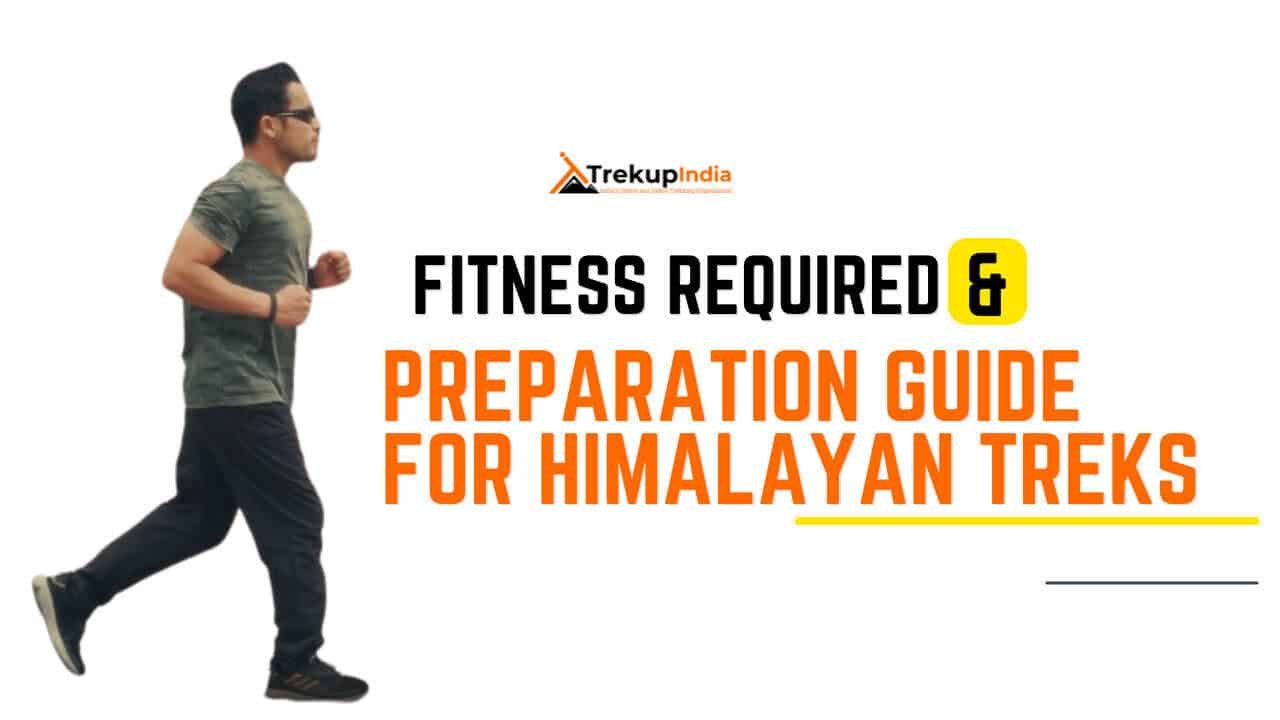
Fitness Target
Trekup India has put the Har Ki Dun Trek into an easy-to-moderate-grade-level trek.
How to Achieve This Fitness Target?
For Easy – Moderate Treks – In order to be well-prepared for your upcoming trek, it is recommended that you focus on building your endurance by aiming to cover a distance of 4.5 kilometers in less than 45 minutes. This will help you to develop the necessary stamina and strength required to successfully complete your journey.
To start preparing for your trek:
- Try jogging for at least five days every week.
- If you find 5 km too difficult at first, begin with 2 km and gradually increase over 2-3 weeks.
- Once you feel more comfortable running 5 km, focus on improving your speed gradually on a daily basis.
It is important to ensure that you can consistently complete 4.5 km in under 45 minutes for at least two weeks before your planned trek. Allow yourself 6-8 weeks to prepare physically for the journey.
Strength Training exercises that benefit Trekking
Trekking is an activity that demands a good level of strength.
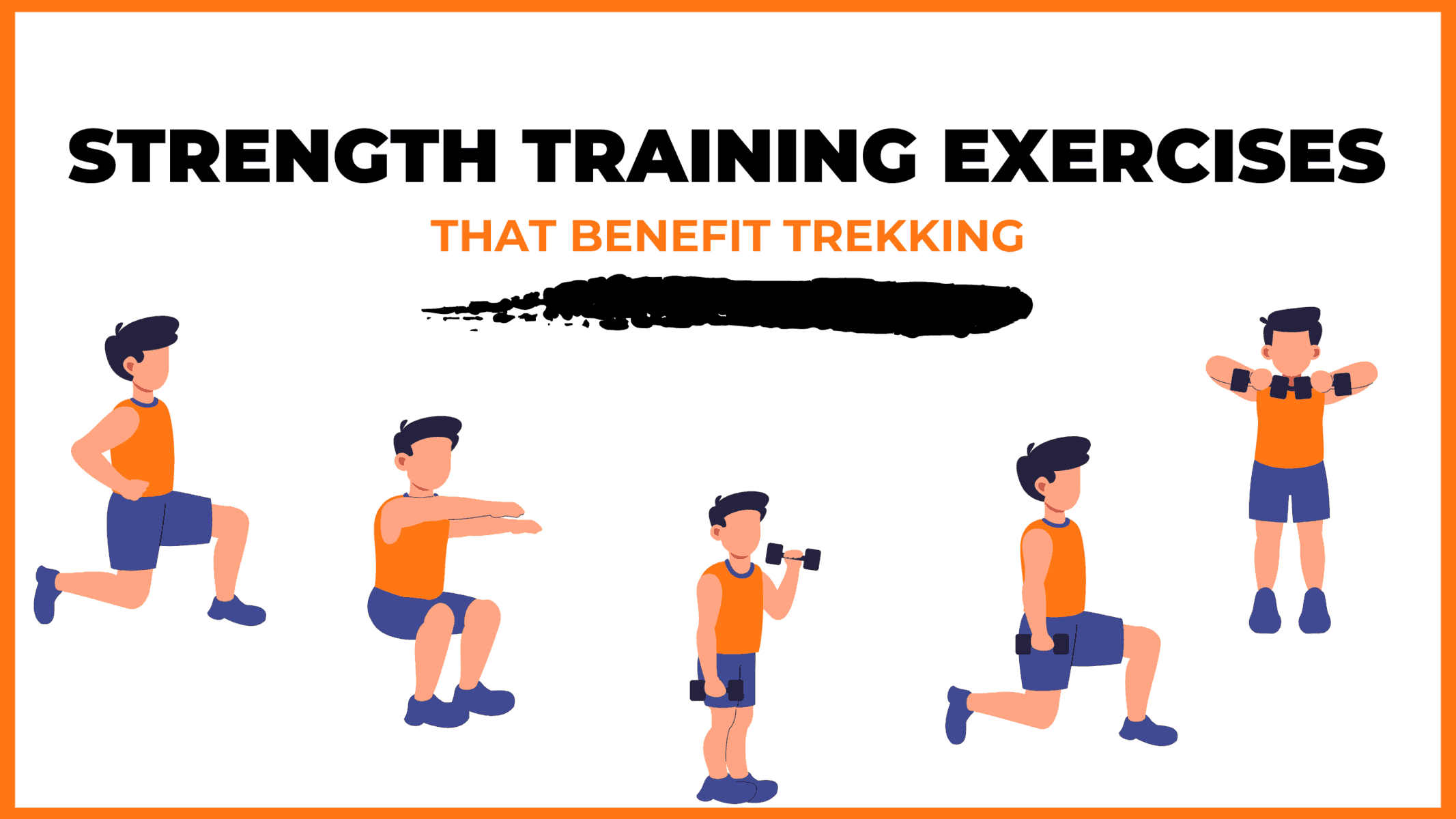
Trekking is a demanding activity that requires good cardiovascular endurance, muscular strength, and overall fitness. To help you prepare for your trek, incorporating bodyweight exercises into your training routine can be an effective way to build strength, improve stability, and enhance endurance, all of which are crucial for a successful trek. In this regard, here’s a breakdown of body weight exercises categorized by the specific body parts they target and the benefits they offer during trekking.
1. Lower Body Exercises
Lower body exercises like squats and lunges are great for building lower body strength, essential for trekking.
a. Squats
Squats are an excellent exercise for building lower body strength, essential for trekking. They target the quadriceps, hamstrings, glutes, and calves. Solid quadriceps and glutes provide power for ascending and tackling uphill climbs, while vital hamstrings aid stability during descents. This is particularly helpful in navigating uneven terrain during trekking.
How to perform Squats Exercises:
- Stand with feet shoulder-width apart, toes pointing slightly outward.
- Lower your body by bending your knees and hips, keeping your back straight.
- Lower until your thighs are parallel to the ground or as low as comfortable.
- Push through your heels to return to the starting position.
b. Lunges
Lunges target the quadriceps, hamstrings, glutes, and calves. They improve lower body strength, balance, and stability, crucial for maintaining control on rocky trails and steep slopes. Additionally, they enhance flexibility, reducing the risk of injury while trekking.
How to Perform Lunge Exercises:
- Stand with feet hip-width apart, hands on hips or sides.
- Take a step forward with one foot, lowering your body until both knees are bent at 90-degree angles.
- Push through the heel of your front foot to return to the starting position.
- Repeat on the other side, alternating legs.
2. Upper Body Exercises
Upper body exercises such as push-ups and pull-ups effectively strengthen the upper body, especially the chest and shoulders, which are essential for carrying a backpack during treks.
a. Push-Ups
Targets: Chest, shoulders, triceps, and core.
Benefits for Trekking: Push-ups are an effective exercise to strengthen the upper body, especially the chest and shoulders, essential for carrying a backpack during treks. Improved upper body strength will also help maintain posture and stability while traversing challenging terrain.
How to Perform Push-Ups Exercises:
- Start in a plank position with hands shoulder-width apart and body in a straight line from head to heels.
- Lower your body by bending your elbows until your chest nearly touches the ground.
- Push through your palms to return to the starting position.
- Keep your core engaged throughout the movement.
b. Pull-Ups/Bodyweight Rows:
Targeting the back, biceps, and shoulders can significantly benefit trekking. You can strengthen these muscle groups by performing pull-ups or bodyweight rows and improve your posture and balance while carrying a backpack. Additionally, more muscular back muscles can help reduce the risk of back strain and fatigue during long treks, making your journey safer and more comfortable.
3. Core Exercises
Core exercises like planks and Russian twists can help strengthen the core muscles, which are crucial for maintaining stability and balance while trekking on uneven terrain.
a. Planks
Targets: Abdominals, obliques, and lower back.
Benefits for Trekking: Planks are an effective exercise that helps strengthen the core muscles. These muscles are crucial for maintaining stability and balance while trekking on uneven terrain. A strong core also helps improve posture, reducing the risk of back pain and fatigue during extended hikes.
How to Perform Planks Exercises:
- Start in a plank position with elbows directly under shoulders and body in a straight line from head to heels.
- Engage your core and hold the position, avoiding sagging or arching the back.
- Keep breathing steadily and hold for the desired duration.
b. Russian Twists
Targets: Obliques, abdominals, and lower back.
Benefits for Trekking: Russian twists engage the core muscles, particularly the obliques, improving rotational stability and balance. Enhanced core strength helps prevent injuries and improves overall performance during trekking.
How to Perform Russian Twist Exercises:
- Sit on the ground with knees bent and feet flat, leaning back slightly to engage the core.
- Clasp hands together and twist the torso to one side, bringing the hands towards the ground beside the hip.
- Return to the centre, then twist to the other side.
- Continue alternating sides for the desired number of repetitions.
4. Full Body/Cardiovascular Exercises
Full-body/cardiovascular exercises like burpees and mountain climbers are excellent for improving cardiovascular endurance, strength, and agility.
a.Burpees
Burpees are an excellent full-body exercise that targets your legs, chest, arms, and core. This exercise dramatically benefits trekking enthusiasts, improving cardiovascular endurance, strength, and agility. Regularly incorporating burpees into your workout routine can enhance your overall fitness level, which can help you endure long hikes and rugged terrains with ease.
How to Perform Burpees Exercises:
- Start in a standing position.
- Squat down and place hands on the ground.
- Jump feet back into a plank position.
- Perform a push-up.
- Jump feet back to the squat position.
- Explosively jump up into the air, reaching overhead.
- Land softly and repeat the sequence.
b. Mountain Climbers
Mountain climbers target the core, shoulders, chest, and legs. This dynamic, full-body exercise can significantly improve cardiovascular endurance and agility. It is an excellent functional workout for trekking preparation as it engages both the upper and lower body muscles while strengthening the core muscles.
How to Perform Mountain Climbers Exercises:
- Start in a plank position with hands shoulder-width apart and body in a straight line from head to heels.
- Drive one knee towards the chest, then quickly switch legs, alternating in a running motion.
- Keep the core engaged and the hips stable throughout the movement.
- Continue at a moderate to fast pace for the desired duration.
Incorporating bodyweight exercises into your training routine can help you build strength and endurance and prepare your body for the physical demands of trekking. Consistency and proper form are crucial to maximizing the benefits of these exercises and ensuring a safe and enjoyable trekking experience. Engaging your core muscles, including obliques, abdominals, and lower back, with Russian twists can improve your rotational stability and balance, preventing injuries and enhancing overall performance during trekking.
When incorporating strength training exercises into your workout routine, it’s essential to maintain proper form and technique to avoid injury. Start with lighter weights and gradually increase the intensity as you progress, focusing on compound exercises targeting multiple muscle groups simultaneously. Some examples of practical strength training exercises for trekking include squats, lunges, deadlifts, and pull-ups.
Remember to give your muscles time to recover between workouts, and remember to stretch before and after your workouts to prevent injury and improve flexibility. Combining strength training with jogging and proper stretching allows you to take your fitness to the next level and confidently tackle even the most challenging treks.
Our Trekkers Reviews And Expreinces
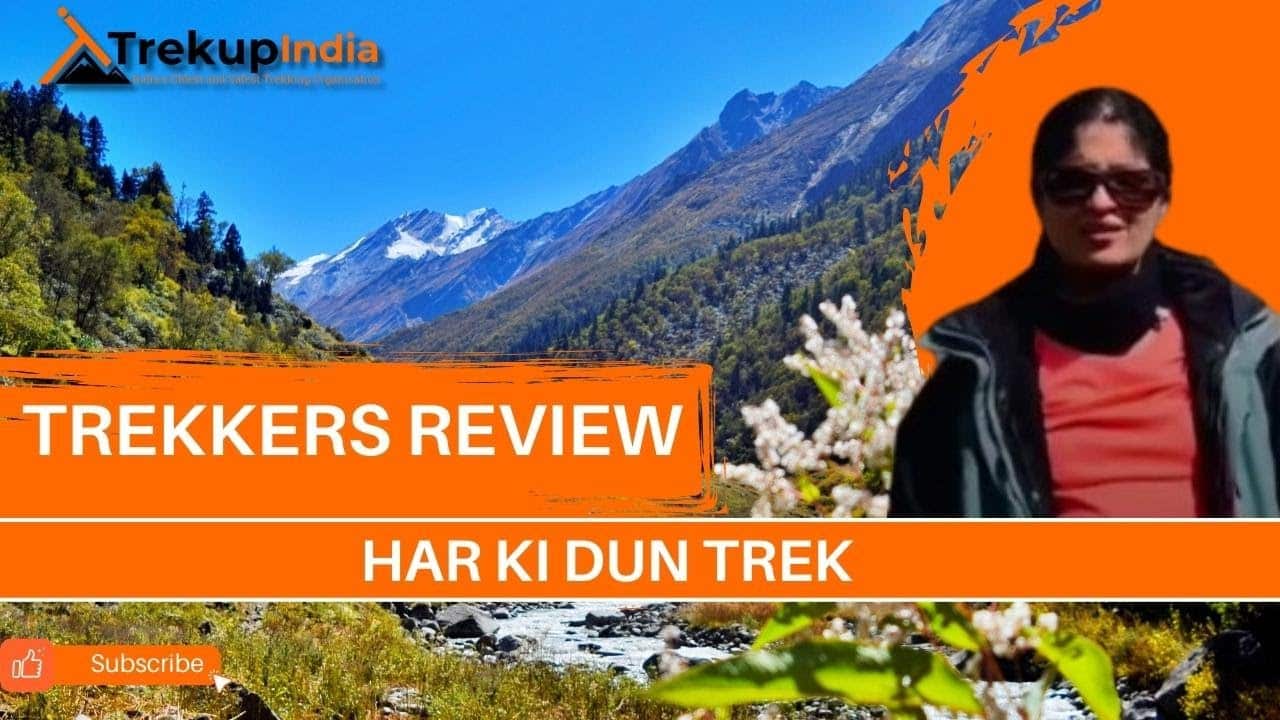
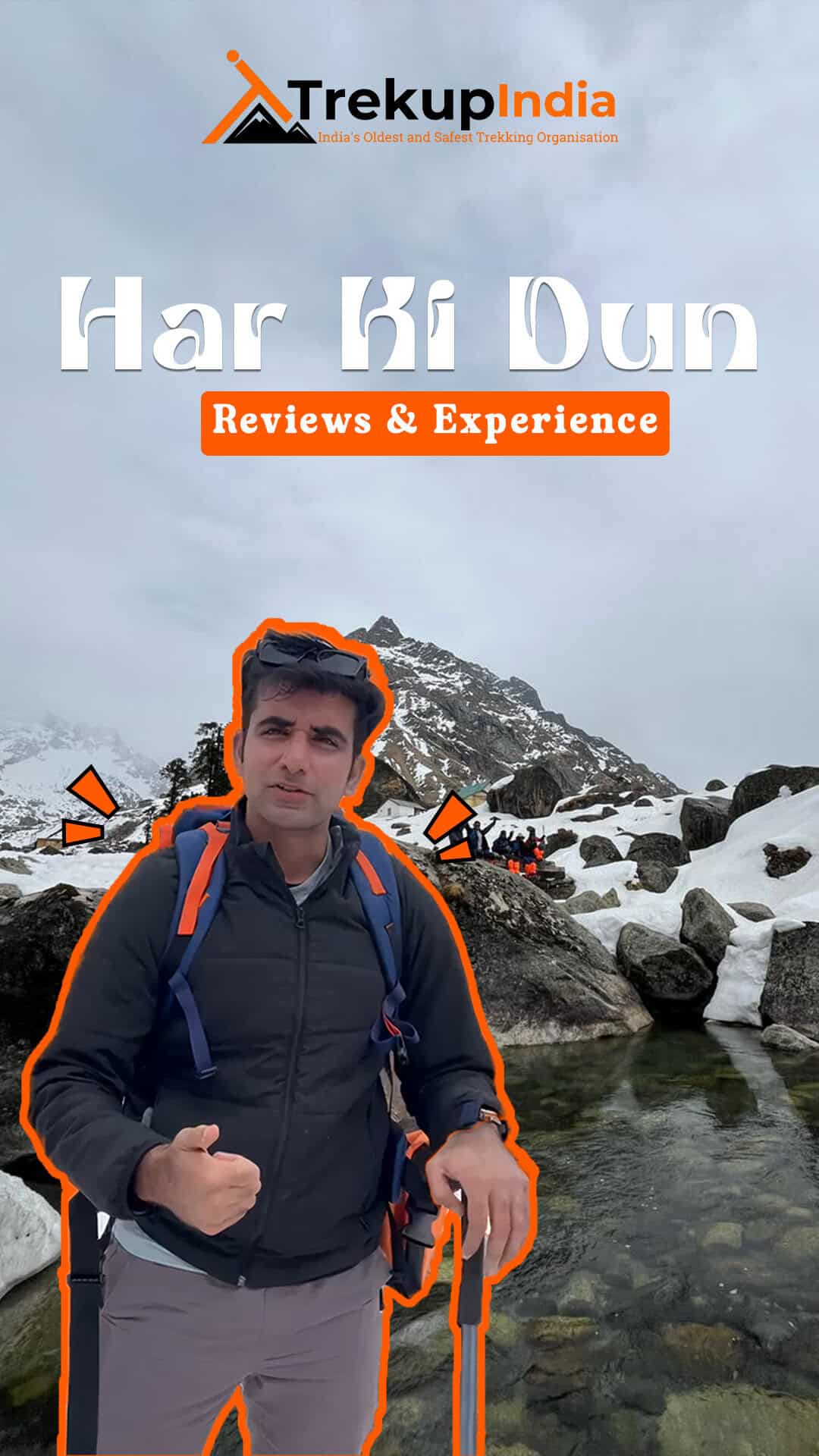
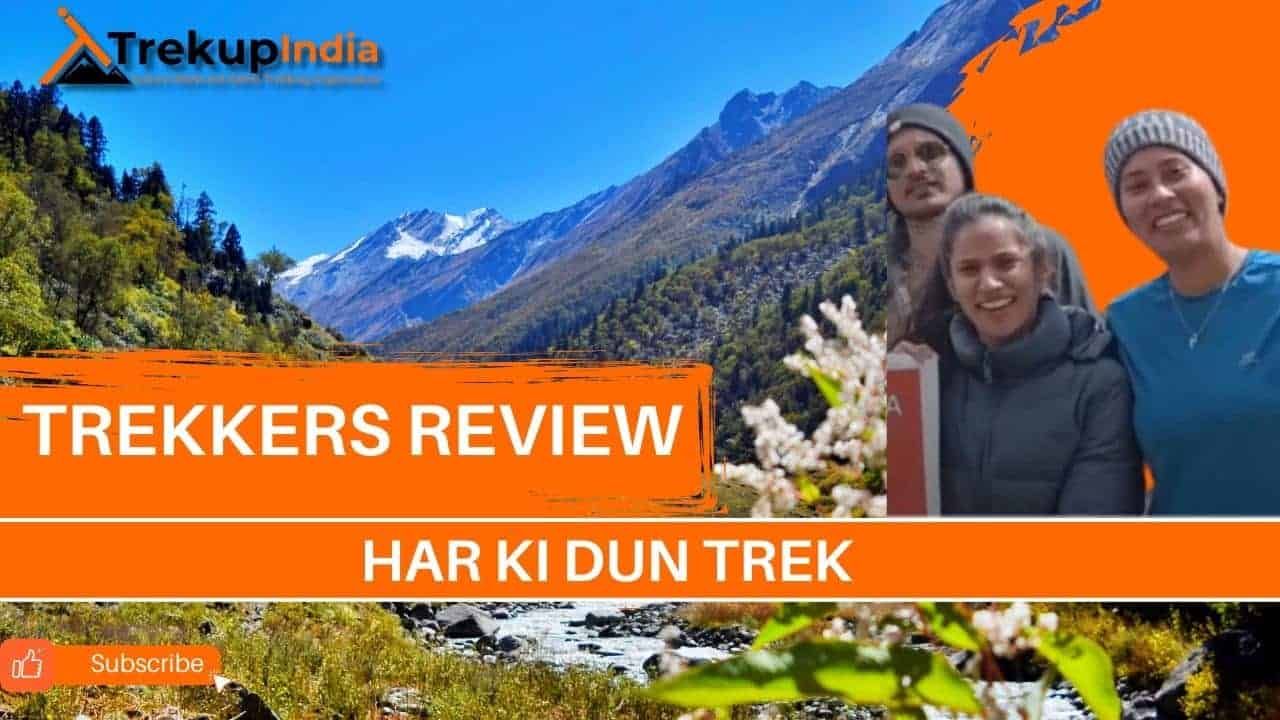
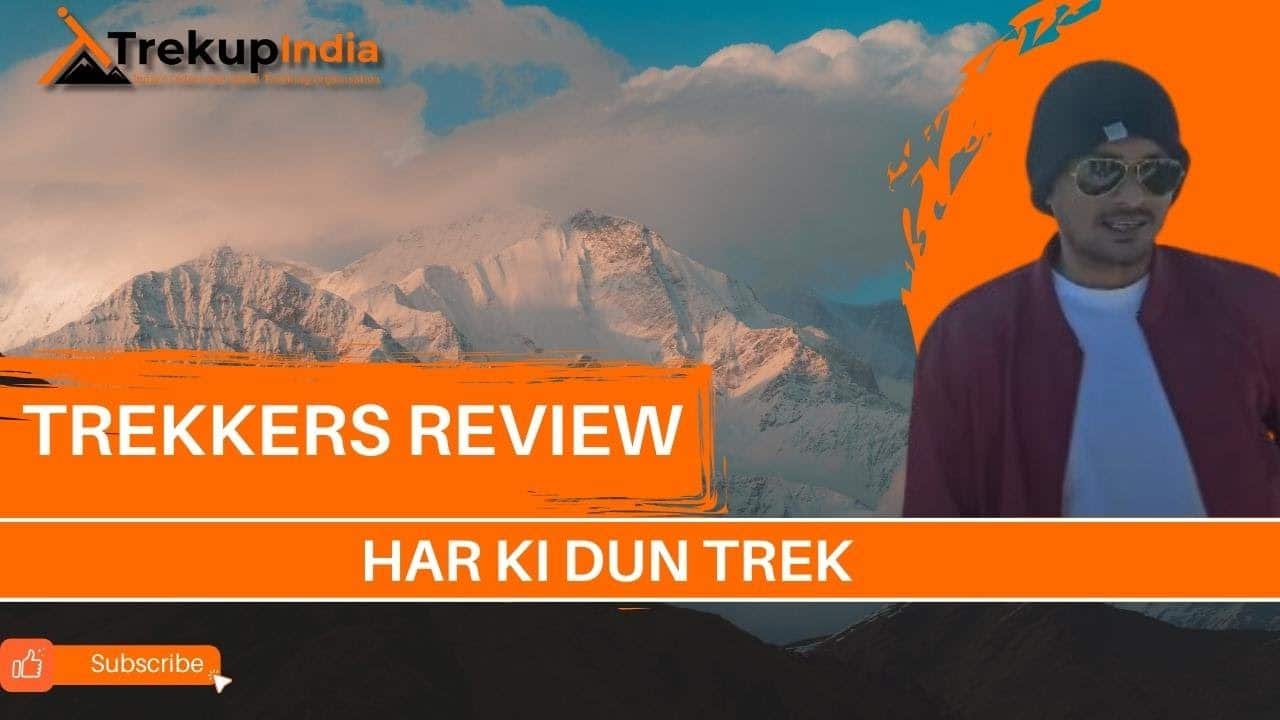
We provide only Indian vegetarian food, and your meal will mainly consist of Indian bread, vegetables, lentils, rice, and a delicious dessert. During your trek, we will serve three meals a day, including breakfast, lunch, and dinner. You will also be served tea, snacks, and lip-smacking soup in the evening before dinner. If it is a long day of trekking, you will be given a packed snack.
After extensive research on the trekkers’ nutritional requirements, we prepare the menu. Before putting all the meals together, we also consider the altitude and the weather.
The meal we serve during the trek is perfectly balanced with calories, carbohydrates, vitamins, protein, fibre, and minerals. You need to know that all our cooks have great expertise in cooking and have undergone thorough training. So, get ready to enjoy delectable and lip-smacking dishes during your trek. You will be served with lemon tea in the tent to start your day with a refreshed feeling. Before leaving the campsite for trekking, you will be given a hot finger-licking breakfast like upma, Aallu Prantha, Besan Chilla, Poha, Daliya, Corn flakes, and Maggie, along with tea or coffee.
If your trek is longer, we also offer some fresh local fruits such as apples and healthy drinks like Frootie or Maaza. In the afternoon, you will be served a simple & healthy lunch, while at around 04:00 pm, you will be given tea and a light evening breakfast. After you reach your campsite at night, you will be served a hot and delightful dinner.
After reading this, you must have understood the food we provided on the trek; you don’t need to worry about food. Many trekkers repeatedly trek with us because of the food we provide. Thus, we will give you unforgettable experiences.

Trekking with us for the Har Ki Dun Trek is entirely safe because we have a team of trek leaders qualified in Wilderness first-aid and complete information about the high-altitude glitches. During the trek, we carry a full first-aid kit that contains all the essential medicines. Before trekking with us, you must ensure that you are medically fit for the trek; for us, your medical fitness is more important than anything else.
Right from our establishment, we at Trekup India have been continuously introducing new safety practices into Indian trekking to ensure the safety of voyagers. Trekup India introduced microspikes and made emergency bottled oxygen mandatory for all treks. Our trek leaders take your daily Pulse oximeter reading. We at Trekup India introduced the radio walkie-talkie as a safety communication device.
How can we ensure that your trek is safe with us?
We have noticed that most trek-organizing organizations do not follow these systems, but with time, they are following us; several competing companies are adopting these practices and organizing great, safe treks.
We ensure complete technical safety in the mountain. Our company has a vast team of more than 100 guides and trek leaders who serve on Himalayan treks. One of the best things about our team is that all the members are trained professionally by the Nehru Institute of Mountaineering, Indian Mountaineering Foundation Delhi, and Hanifle Center Outdoor Education Mussoorie.
Explore our New Safety Protocols
To ensure a perfect Trek, we have introduced some new safety checks to ensure excellent safety for our trekkers.
Our On-trek safety checks include:
- Daily oxygen saturation, along with pulse readings
- Stretchers team appointed on every trek
- Radios
- Trained mountain staff and complete safety
- Additional oxygen cylinders
- Special medical kit for high-altitude treks
- Microspikes on all types of snow treks
- Experienced Trek leaders, as well as safety
- Technical team on all snowy slopes
For Us, Your Safety Is the Top Priority
At Trekup India, you will find a team with local knowledge and fluency in English and Hindi. This helps ensure that you have a fantastic trek. Not only this, but we also pay attention to your health and safety because this is something we cannot ignore. All the team leaders involved in trekking have already undergone several professional courses in first aid, portable altitude chamber training, CPR, environmental awareness training, and advanced wilderness emergency medicine.
We also carry a complete first aid medical kit on every trek and trip we organize. Apart from the medical kit, we take a portable altitude chamber (if needed) and medical oxygen for all high-altitude treks. Our company has significant expertise in organizing all sorts of group adventure holidays for family groups, school and college groups, and friend groups. We have many travel options that suit different fitness levels and travelling styles.
Regardless of the group size, we value each and every member of our trekking groups. Our commitment to personal attention ensures that your needs and safety are always our top priority.
Who we are?
Trekup India has been a stalwart in the Adventure Tourism industry for 30 years. Since our inception, we have been dedicated to providing top-notch treks, voyages, trekking programs, and high-altitude expeditions. Our extensive experience is a testament to our commitment to your adventure and safety.
We organize treks in Uttarakhand, Kashmir, Sikkim, and Himachal while being part of the trekking community; we feature more than 75 documented Himalayan treks. In addition to other outdoor activities, our company also organizes trips for schools, colleges, and families.
Therefore, we maintain the quality of services offered to our valuable customers.
Must Read These Information Of Har Ki Dun Trek
Why You Should Do Har Ki Dun Trek
Har ki Dun is a place where geography meets mythology. Har ki Dun Trek is an ideal option for those new to trekking and wanting to experience picturesque mountain views. This trek is also known as the Hanging Valley because of the cradle-shaped mountains. Har ki Dun translates to the Valley of God. At 12000 feet, you will feel closer to the magnificent snow peaks. The culture of this place appears untouched by time, as it is 2000 years old, just like the temple built by the locals to pray to Durydhoan. This trek is perfect for nature enthusiasts or those interested in Indian history. You will experience the same trek the Pandavas took in the Mahabharata when they travelled to heaven. Walking along the trail, you can walk beside a quaint river flowing through the hills. If you are lucky enough, you might witness the morning sun’s rays brightening the valley as it rises. In the evening, you could enjoy the sunset turning red and orange. You can spot boars, leopards, and barking deer if you are fortunate. The village is also home to the Himalayan Langur and Blue Sheep. On the way, one can enjoy local cuisine at the local dhabas. There are also temples in the area where you can visit cultural sites. Interested travellers can purchase rice, potatoes, and rajma grown locally, along with knitted jackets and sweaters. The best time to visit this trek is during [best time to visit] when the weather is [weather condition].
Best time to do Har Ki Dun Trek
The best times to visit the Har Ki Dun trek are March to June and September to December. It is a beautiful time to visit from March to June because it is spring, and the weather is not too hot or cold as the snow melts. On the trek, you will see pristine, lush green deodar trees with water dripping and shining like crystals. You can also enjoy beautiful wildflowers, especially orchids. These villages have snow-covered huts shimmering in gold and orange. As you walk along the sparkling water stream, you pass through bridges.
Another is September to December because it is winter, and the weather is freezing, but you get to see the snow. Sun rays fall on the white canvas of snow as you walk through the trails. While walking along the trail, you can also see frozen lakes and rivers. The mountain ranges of Swargarohi, Kala Nag, and Bandarpoonch are crowned with snow, and you can enjoy the scenic beauty of the mountains. , The weather becomes so clear at night that you can enjoy the starry sky.
How Difficult is the Har Ki Dun Trek
The Har Ki Dun trek is a popular destination in India and is suitable for both beginners and experienced trekkers. However, the trek’s difficulty level can vary depending on several factors, such as weather conditions, individual fitness levels, and trekking experience.
The trek is generally moderately difficult. Trekkers must walk for 6-7 hours a day on average, with occasional steep ascents and descents. The altitude is one factor that adds to the difficulty. At its highest point, Har Ki Dun reaches around 11,700 feet (3,566 meters), which can cause altitude sickness for some people. Thus, it’s essential to acclimatize appropriately and be prepared for the effects of high altitude.
The trek’s terrain consists of forests, meadows, rocky paths, and snow patches, especially if you’re trekking in the early or late season. Some sections may require navigating through boulders and crossing streams. Additionally, weather conditions can significantly impact the difficulty of the trek. Har Ki Dun experiences varying weather patterns, with sunny days, rain, and even snow possible depending on the season. Trekkers should be prepared for sudden weather changes and pack accordingly.
The length of the trek can also influence its difficulty. Har Ki Dun is usually a 6 to 8-day trek, covering a distance of around 50-60 kilometres (round trip). Trekking for multiple consecutive days can be physically demanding, especially if you need to get used to it.
Though it’s possible to trek independently, many trekkers opt for guided tours. These tours provide support in terms of logistics, safety, and experienced guides familiar with the terrain, making the trek less challenging.
In conclusion, while the Har Ki Dun trek is not overly complicated, it requires a reasonable level of physical fitness, proper preparation, and caution while trekking at high altitudes. With the right mindset and adequate preparation, it can be an enriching experience for trekkers of varying skill levels.
Mythological Stories About Har Ki Dun Trek
As you traverse the trekking path, you will encounter various sacred structures in the villages and along the trail, each venerating a unique local deity. One of the most remarkable discoveries is a secluded temple dedicated to Someshwar Mahadev, a revered incarnation of Lord Shiva, which lies along the way to Oslo. This hidden gem, the Someshwar Mahadev temple, is a fascinating testament to the region’s profound cultural heritage and storied past.
Frequently Asked Questions About Har Ki Dun Trek
What is the age limit for this trek?
Although this trek is pretty straightforward, it is at a high altitude, so if you have breathing issues or knee pain, you should not go there. If you are fit, Trekup India has set an age limit from above 8 to 65 years.
Is any service available if I cannot carry my luggage?
Yes, you can offload your bag. You have to call our mountain expert, and they will tell you the whole process.
What is the best time to visit Har ki Doon trek?
The best time to visit Har Ki Doon is from March to June (spring to early summer) and from September to December (autumn). During these months, the weather is usually pleasant, with clear skies offering stunning views. However, the valley is not accessible during winter due to heavy snowfall.
What should I pack for the Har ki Dun trek?
If you plan camping, pack layered clothing, trekking boots, a first-aid kit, a water bottle, high-energy snacks, a flashlight, toiletries, a camera, and camping gear. Carrying rain protection during monsoons and extra warm clothing for nighttime and cooler months is also essential.




